Are Disability and Death Inextricable?
According to the CDC, about 15% of Americans live with some form of disability. However, many more than 15% of Americans display attitudes that indicate they believe people with disabilities have diminished quality of life. Disturbingly, this includes the people with disabilities themselves. According to Exceptional Children: An Introduction to Special Education, just 20% of people with disabilities have achieved any level of independence 5 years after high school, and 75% of people with disabilities are unemployed or under-employed (Heward et. al). Heward also points out that many students with disabilities who are consigned to special education find that their “education” does not translate to real-world experiences. Thus, when asked, they report feeling “lost” and “unimportant” (Heward et. al). Perhaps this is why, on social media outlets like Quora, users can still find stories of parents terrified to raise a disabled child. Perhaps it’s why the abortion of American babies with disabilities like Down Syndrome remains at 90%, and why abortion of babies with cerebral palsy and other physical disabilities remains at 40-50% (Zhang 2020).
Of course, not very many people would express these feelings outright. To do so is not “politically correct” or “inclusive.” Yet for years, even and especially in recent decades, real life and the media have shown a cloaked, yet prevalent attitude. They have shown most people believe disability and death are inextricable, and that death is the most natural and merciful course for disabled people. The sooner that death can happen, the better.
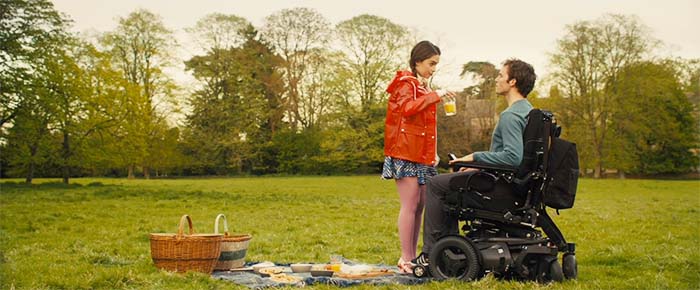
Just one of the most egregious examples of this, though certainly not the first, is the film Me Before You. On June 3, 2016, Me Before You opened in American theaters. Based on JoJo Moyes’ bestselling novel, Me Before You tells the story of Louisa Clark, “an ordinary girl living an exceedingly ordinarily life” (Moyes). Louisa takes a job as a caregiver for Will Traynor, a former world class athlete and world traveler who lost it all after an accident left him “wheelchair bound” (Moyes). Me Before You, the book and movie, allegedly chronicle the relationship between the bitter Will and the ordinary (abled) Louisa, who treats him differently than anyone else, but not because of his wheelchair.
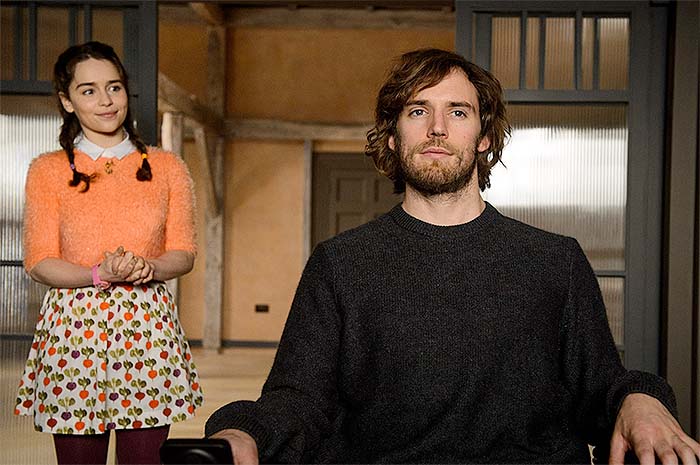
However, people with disabilities (PWDs), professional advocates, and reams of others have protested Me Before You. Despite its premise, this story is less about a deep, inter-abled relationship than it is about ableism. Specifically, Will ends up committing suicide. According to the staff of the RespectAbility website, Will’s suicide makes Me Before You a “disability snuff film” that promotes the idea it’s better to be dead than disabled.
John Kelly, New England regional director of the organization Not Dead Yet, pointed out the myriad flaws of this narrative in an interview when the film first released. “JoJo Moyes admits she knows nothing about quadriplegics,” said Kelly, who has the same type and level of injury as character Will Traynor. “Yet her ignorance is allowed to promote the idea that people like me are better off dead. We are not ‘burdens’ whose only option is to commit suicide” (Kelly 2016). Other advocates agreed. “We’re sick of society saying…you should just go and die,” Stephanie Woodward of Greece, NY’s Office of Disability Rights said. “People with disabilities want to live.” These and other sentiments have opened the conversation about disability, death, and whether they are synonymous, more than ever before.
Life vs. Quality of Life
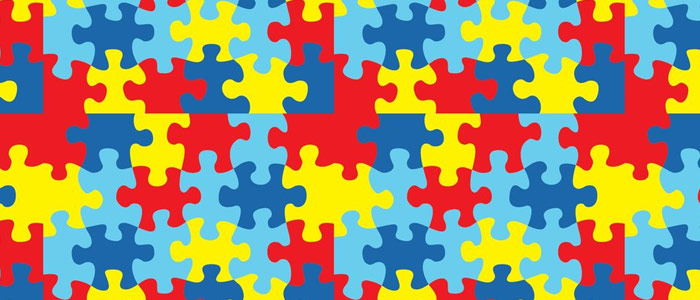
Many people outside the disability arena would argue people with disabilities are living. This writer herself lives with cerebral palsy and Asperger’s syndrome, and has encountered many instances of ableism being pooh-poohed on social media. In one case, she saw a commenter who wrote, “I have mild cerebral palsy and have never [experienced ableism.]” A responder wrote, “Probably because of onesies and twosies trying to [make a big deal.]” Others on the thread decried ableism as “another -ism,” an invention of “woke” politics, and an excuse for victimhood. This includes other disabled people, one of whom called ableism “a steaming pile of crap.”
These arguments aside, few if any people would actually say they want people with disabilities to “go and die.” A minority can certainly be found on social media, usually on Reddit or similar sites, operating under hashtags like #unpopularopinion. There, they revel in calling disabled people “retards” and other slurs, saying they are not useful to society, and mocking anyone who speaks of disabled people with compassion or regard.
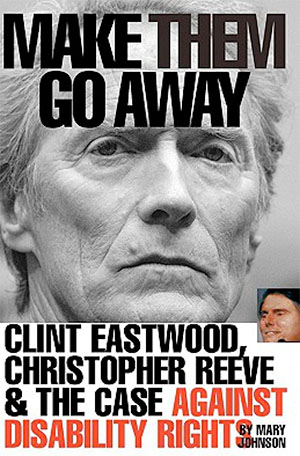
Yet as author Mary Johnson puts it, most of America, Britain, and Canada have accepted the narrative “help the handicapped.” In her book Make Them Go Away, Johnson goes on to explain “help the handicapped” sounds benevolent in theory. Yet underneath, the narrative still presents disabled people as fundamentally different types of humans, who must be helped and cared for if they are to experience any life quality at all. The problem is, that quality of life, and the level of quality, is usually determined by non-disabled people. These are usually some form of caregiver, whether a family member, doctor, therapist, teacher, or social worker.
Untangling Disability Representation from Death
The struggle then, becomes how people with disabilities and their supporters can present disability in the most positive light possible. The goal is communicating, “This population needs and deserves ultimate quality of life.” But before this argument can be understood and accepted, people with disabilities must be represented. Representation often starts in fictional media, including books and movies. As the twenty-first century progresses, more media creators are giving consumers vibrant, three-dimensional, and living characters with disabilities. More creators are also trying to avoid plots wherein characters with disabilities (CWDs) commit or contemplate suicide.
However, a close examination of past and recent media, including some “classics,” indicate death and disability are still tangled in each other. That is, most if not all CWDs face the threat of death, be it physical, mental, emotional, or some combination. Physical death in particular seems to stalk CWDs more than able-bodied characters, even if physical death isn’t imminent. One could argue even the most well-developed CWDs haven’t been and perhaps cannot be represented without death.
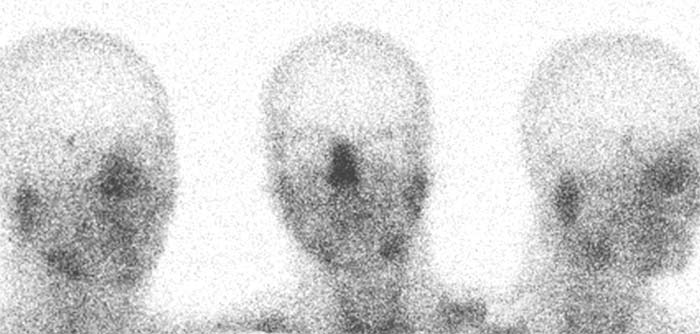
The next question then, is whether the use of death in disability-based stories is always a bad idea. Disabled or not, most protagonists face some form of death as detailed above. The threat of death makes living readers identify with, remember, and learn from fictional characters. When the characters are disabled though, death must be handled differently so the narrative doesn’t become “better dead than disabled.”
The best way to elucidate how CWDs can triumph over death in their stories lies in examining good and bad examples of facing death. In so doing, we will focus on how fictional media should learn from these examples. We will discuss how future disability stories can redesign the “death” concept while avoiding the “better dead than disabled” message, or implying people with disabilities “need” to die. We will focus on how creators can reshape death so that, like their abled counterparts, disabled characters can triumph over it and live.
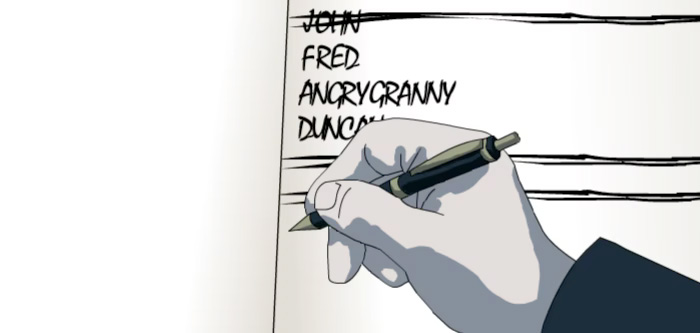
For the purpose of our discussion, we will use “person or people with disabilities” or “disabled people” to describe the character population. The real-life disability community has expressed individual preferences for both terms. We will also use “abled” or “non-disabled” to refer to non-affected characters, and discuss “ableism.” Ableism is discrimination against disabled people, including systemic attitudes or biases that show preferences for abled, unaffected minds and bodies.
Death of Disabled Identity
Sometimes characters with disabilities face physical death, but don’t experience it. Instead, they experience “death of the disabled body.” That is, the body doesn’t die, but it is cured of disability in some way, so the disabled body “dies” and becomes “whole.” Often, cure or “death of disabled body” is presented as a CWD’s only hope for true happiness. The cure occurs at the climax, where as TV Tropes puts it, the CWD “throws off the disability” for good. The audience is left with the impression that now, without a disability, this character can live as he or she was meant to. The fact that part of this character’s identity has “died” is not acknowledged, except with a cheery, “Good riddance.”
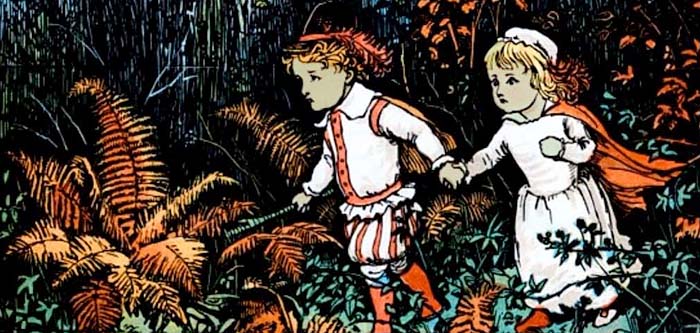
Many classic works and their creators use this trope. At times, it’s milked to the hilt. According to Professor Lois Keith, the tropes were extremely common in the Victorian or Edwardian eras, in children’s literature specifically. Keith explains the “aim” of children’s literature during these eras was “largely didactic,” meant to teach children “how to overcome selfishness or a too-strong will, or to conform to traditional roles and gender expectations” (Keith 2004). Failing that, children’s literature was made up of “warm family stories.” Such expectations may be why classic authors fell back on “death of disabled body” rather than actual death of a disabled character. That is, killing any innocent character, particularly a disabled one, in a warm story meant to teach children moral lessons, would’ve been counterproductive. If anything, it might have meant another death–of the authors’ careers. Perhaps then, these authors went as far as they dared within the framework of their era, creating a different type of death.
A Christmas Carol

Indeed, one of the most famous examples of the physical death or death of disabled body tropes is Charles Dickens’ A Christmas Carol. The “holiday ghost story” was first published in 1843 and hasn’t been out of print since. One of the elements that makes it such a classic is the juxtaposition of cruel anti-hero Ebeneezer Scrooge with Tiny Tim Cratchit. As his name implies, Tim is an undersized boy, one of many victims of Victorian London’s ubiquitous poverty. Unlike Scrooge, Tim is raised in one of those warm and loving families Lois Keith discusses. He’s kind, unfailingly submissive, forgiving, and constantly spouting nuggets of wisdom. Tim is also disabled and in fragile health. His disability isn’t named, but he walks with a crutch for short distances. Otherwise, his family carries him.
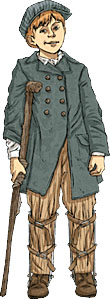
Tim’s father and Scrooge’s clerk Bob Cratchit implies that someday, Tim might “throw off” his disability. In the George C. Scott film adaptation, father and son stop at a local hill on the way home to watch other, abled children play in the snow. “You’ll be there one day,” Bob encourages his son, and Tim agrees, saying he feels stronger each day. However, viewers and readers soon learn this is a pipe dream. As the Ghost of Christmas Present warns Scrooge, “if these shadows are unaltered by the future, the child will die.” In other words, if Scrooge’s avaricious behavior doesn’t change, Tiny Tim’s life is forfeit.
Disabled, Yet Morally Perfect
One could argue the Ghost’s warning isn’t only about disability. After all, Tiny Tim is the first character Scrooge has shown any concern or kindness toward. It would make sense for the possibility of his death to shake Scrooge up when nothing else could. In addition, Tim lives in an era where poverty like the Cratchits’ often meant premature death, disability or not. Even his nickname, “Tiny Tim,” is arguably not patronizing because well, the boy is a tiny kid. The nickname endears him to readers and viewers. Tim reads as the little brother or longed-for “last baby” every “warm and loving” dad wants to hoist on his shoulders, every mom wants to cuddle, and every sibling wants to protect.
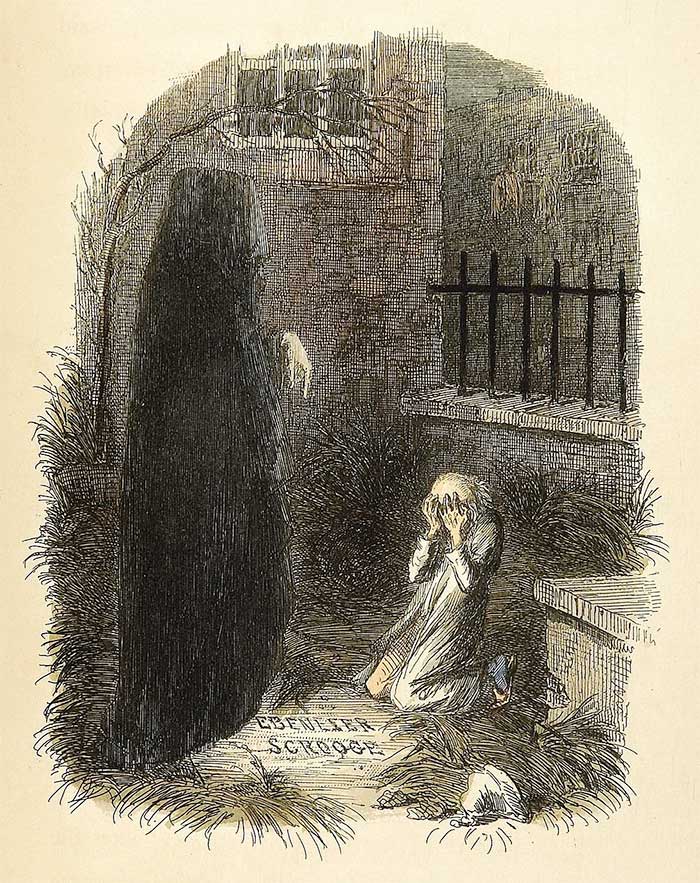
However, these justifications for the threat of Tim’s death don’t hold up. Poverty isn’t a good reason because, struggling though they are, the Cratchits read as Victorian London’s version of lower middle class. They can comfortably provide for several children, if on a tight budget. Two of those children are of working age, skilled enough to get secure jobs, and treated well in them. Thus, it makes more sense to blame Tim’s premature death on disability. Said death might change Scrooge, but readers might well ask, does the death of an innocent child, and a minority at that, make Tim’s arc fair? Readers can even argue, blaming Scrooge for the death of a disabled child he barely knows does nothing for his character. It only makes him more a cardboard, irredeemable villain. Worse, such a move destroys the story’s theme, that everyone, regardless of position or ability, is capable of the embodiment of Christmas spirit.
In the end, Tiny Tim does not die, and Scrooge becomes “a second father” to him. In some adaptations, he’s shown running for Scrooge to sweep him up in a hug at the end. In other words, Tim is not dead, but his disability died. Yes, in his era, the disability was more an obstacle than anything. Still, the message remains, a disabled identity is not the ideal. If a reader wanted to be harsh, they could say the message is, “Problems like disabilities only lead to death, which ruins good things like kindness, love, and Christmas.”
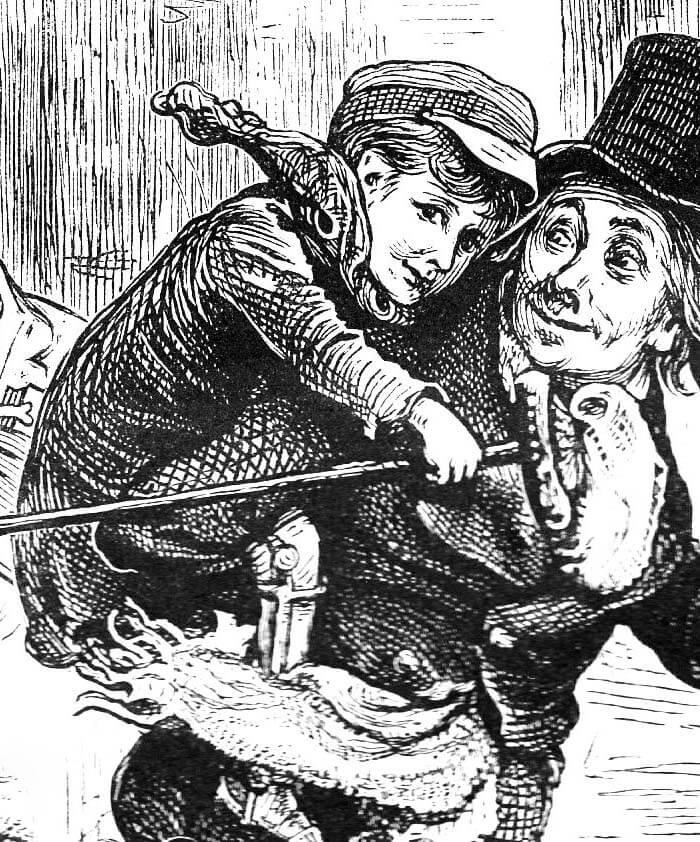
The Secret Garden
A similar and more disturbing example of “death of disabled body” occurs in Frances Hogsdon Burnett’s The Secret Garden. Published in 1911, this children’s classic is Edwardian, not Victorian, but its didactic nature remains. Since The Secret Garden is geared more toward children, and not whole families like A Christmas Carol, the didactic nature is arguably more pronounced. Spoiled, “imperious” characters like Mary Lennox and her cousin Colin Craven exist in part to warn children away from imitating their behavior (Burnett). Better, Colin is disabled while Mary is not, which sends the message that spoiled, bratty behavior is not contingent on ability level. However, most of the lessons and themes in the book are tied to disability or the death thereof.
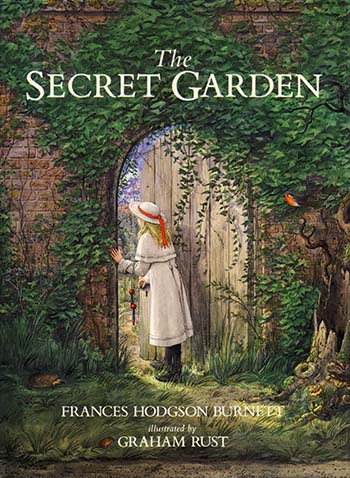
Disability does not appear in The Secret Garden until the second half, when Mary discovers Colin. Until then, she had associated Colin with the mysterious crying she heard echoing in the halls of her Uncle Archibald’s mansion, Misselthwaite Manor. One night, Mary gets up the courage to investigate, and finds Colin in apparent distress. According to Colin, he has struggled with illness since he was born. In the 1993 film version, he tells Mary he has spent his entire life in his bed. Mary’s maid Martha confirms this, noting that Colin was an extremely weak premature baby everyone thought would die. “His father couldn’t bear losing [Colin] too,” Martha says. Indeed, childbirth killed Uncle Archibald’s wife, and he was determined to spare himself and his son any more suffering.
Archibald’s determination has given Colin a dismal present and uncertain future. Colin believes he will inherit his father’s “hunchback” and die young, deformed, and an ultimate object of pity. He’s not supposed to know this grim prediction, he tells Mary. But Colin’s nurse, housekeeper Mrs. Medlock, and the household staff haven’t watched their tongues around him. The doctor has also been vocal about Colin’s prognosis. “[He] is my father’s cousin…he will have this house after my father. I shouldn’t think he wants me to live,” Colin says in the 1975 BBC miniseries. Indeed, Dr. Craven doesn’t actively hasten Colin’s demise. Yet like many doctors of his era, he’s quick to offer vague diagnoses such as “nerves,” a plethora of prescriptions, and less-than-hopeful outlooks, especially for disabled or chronically ill patients.
Disabled and Doomed to Misery
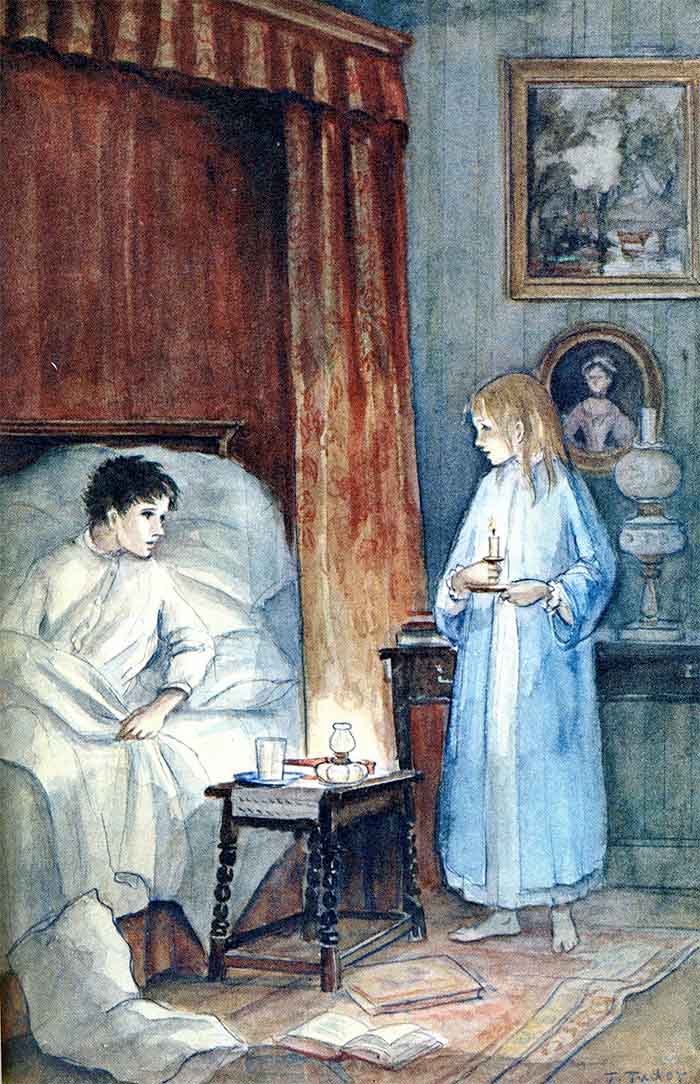
Physically and psychologically ineffectual, Colin asserts power the only way he can. He uses his position as the heir, and the pity others direct at him, against the other Misselthwaite residents. As Colin explains to Mary, he must be given anything he asks for, and “no one dares make me angry. If I’m angry, I feel ill.” The staff is terrified illness will send Colin spiraling toward his deathbed, so they don’t correct or discipline him in any way. By the time readers meet him then, Colin is more spoiled and selfish than the imperious Mary ever was, and that’s saying something. Unlike Mary for instance, Colin doesn’t hide the extent of his nature behind surly comments and cold silences. He’s more apt to throw kicking, screaming tantrums on the level of a toddler, often because he felt phantom pains or lumps on his back.
The biggest difference between Colin and Mary though, is the latter has had exposure to physical, emotional, and social outlets, because she is able-bodied. Mary is able to leave the house whenever she wants. She spends most of her time exploring the grounds and gardens, as well as discovering the titular secret garden. She devotes her energy to helping her garden grow, thus helping herself grow physically. As for her emotional and social growth, Mary finds that in caring people like Martha, Dickon, and Ben Weatherstaff, as well as a few animal friends like the garden robin. Perhaps because Mary is healthy and able-bodied, the people around her aren’t cowed at her attitude. Some offer gentle or cleverly disguised correction; the BBC miniseries, for instance, adds a servant named John who teaches Mary to say “please” and “thank you” because “it’s the custom” in England. Others, like Ben, offer the same grumpy reception Mary gives them, in a sort of reverse psychology. Still others, like Dickon, offer patience and unconditional friendship based on mutual interests, like a love for flora and fauna.
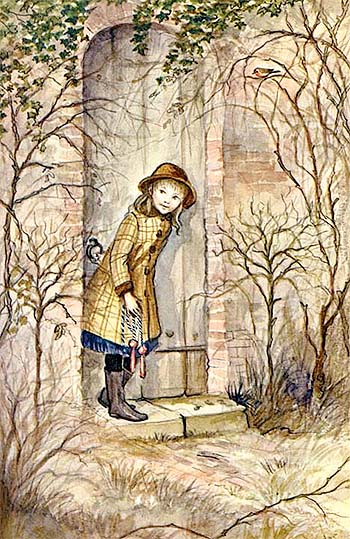
By the time Mary meets Colin, she, the abled one, is flourishing, while Colin, the bedridden or “wheelchair-bound” one, is withering (wheelchair-bound, in this case, because he is in every sense “bound” to the “invalid” label the wheelchair symbolizes). This in itself is a problem, especially when Colin gets worked into “hysterics.” Mary tells him off for the tantrum, as well she might. After all, there’s nothing physically wrong with Colin except weakness, and he’s manipulating the staff to the hilt. But the scene also communicates disabled people are all prone to act like Colin does. It also implies sickness is mostly inside the person’s head.
Indeed, Frances H. Burnett leans heavily on this idea during the last third of The Secret Garden. Burnett was a devotee of Mary Baker Eddy, a Christian Science practitioner who did believe all illness was psychosomatic or a matter of not having enough faith. Colin’s religious faith isn’t explored, but once Mary convinces him to go into the secret garden, his health perks up. Within days, he’s walking again; the 1993 film shows him climbing stairs, and the miniseries has him proclaim, “I’m going to be an athlete!” The last scenes of the book and adaptations show Colin walking or running, “as strongly and steadily as any lad in Yorkshire.”
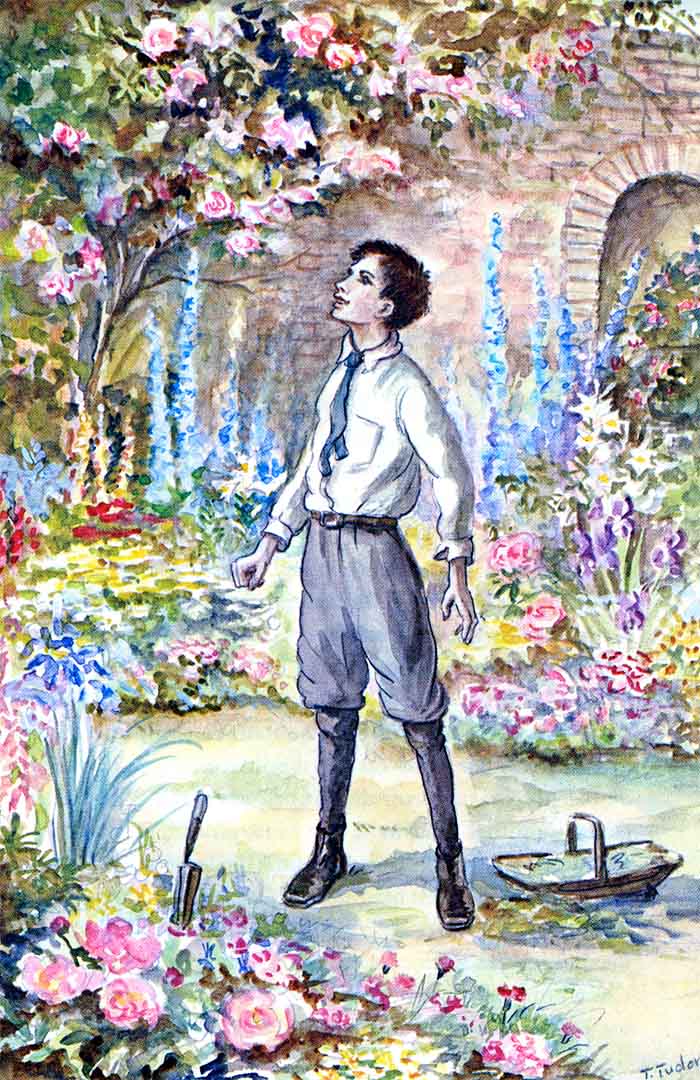
One could argue Colin’s experience isn’t “death of disabled body,” because he was never disabled. His experiences in the garden prove everything was in his head. However, Colin’s experience is not only a physical “disability death,” but almost a complete cold-blooded murder of the disability experience. That is, Frances H. Burnett first implies disability is a matter of personal weakness, whether that’s emotional or spiritual, and easily cured. She next implies disabled people should be cured because otherwise, they’re apt to wither into themselves and take out bitterness or fear on others. Failing that, they’ll be pampered brats.
Finally, Burnett through Colin implies a person can go from disabled–thus unable–to completely able in every sense, in record time if they believe enough and “grow” enough. No room is left for the physical realities of disability or the possibility that a disabled person could retain his or her disability and still excel, accomplish, and grow. Perhaps most disturbingly, no room is left for the possibility of a disabled person being something between an angel and a brat–in other words, a typical, ever-evolving person. Anything like this is completely choked out like a weed in the garden of mind over matter.
Pollyanna
Published in 1913, Eleanor H. Porter’s novel Pollyanna is neither Victorian nor Edwardian (the Edwardian Era ended in 1910). It’s also American, whereas the previous two novels in our discussion were British. However, Pollyanna maintains the didactic nature of children’s stories from those eras, as well as the didactic presentation of disability. In fact, protagonist Pollyanna Whittier’s portrayal is so saccharine, her name is synonymous with unrealistic optimism. The treatment of disability in her story proves the “death of disabled body” trope easily jumped across the pond.
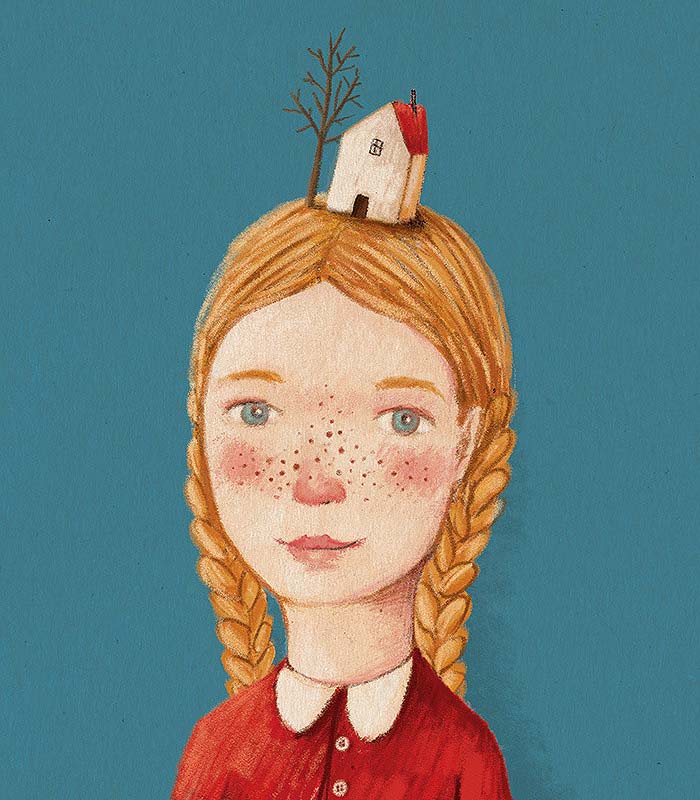
Interestingly, Pollyanna doesn’t start out disabled. In many ways, she’s the epitome of an “all-American girl”–able-bodied, intelligent but not overly so, a charitable minister’s daughter, Caucasian, and blonde. (Hayley Mills’ 1960s Disney portrayal adds ringlets and blue eyes). She is an orphan, which knocks down her status in the eyes of Harrington Town. But considering she’s also the niece of wealthy town founder Polly Harrington, the town doesn’t openly scorn her as they might other orphans. Other people do question Pollyanna’s insistence on being “glad” about everything, but more as a curiosity or annoyance than an example of bad behavior. If anything, Pollyanna is as close to perfect as a 1910s children’s lit protagonist can get. Specifically, she’s the perfect person to deal with Harrington’s many curmudgeons, including those with illnesses or disabilities.
Pollyanna wastes no time spreading her optimism through the Glad Game, a mentality her father taught her. As Pollyanna explains it, the Glad Game is a personal challenge to find something worthy of gladness in any situation. Her first example actually hearkens back to disability. When a pair of crutches showed up in a missionary barrel instead of the doll Pollyanna wanted, she and Dad decided to be glad she didn’t need the crutches. Voila, all disappointment over the doll forgotten. Pollyanna continues with these examples throughout the book and film. She’s glad Aunt Polly forced the two of them to share a room, because neither Pollyanna nor her aunt will have to be lonely. She’s glad she can listen to one of the Reverend’s hellfire and brimstone sermons on Sunday, because “it’ll be a whole week before Sunday comes round again.” She’s glad she’s never had ice cream, because after all, she doesn’t know what she’s missing and can’t be disappointed.
Some people, including Aunt Polly, dismiss the Glad Game as childish, annoying, and forced. Others, however, soon warm to Pollyanna’s ideals, partially because Harrington is rather cold and legalistic under Aunt Polly’s rule. The Reverend, for instance, determines to start preaching “happy texts” from the Bible, and tells Aunt Polly she was wrong to tell him what to preach. Household maid Nancy looks forward to Pollyanna’s “glad” observations, and soon becomes a confidante to the little girl. The 1960s film adds positive changes for sour-faced maid Angelica and a neglected, cynical orphan named Jimmy Bean.
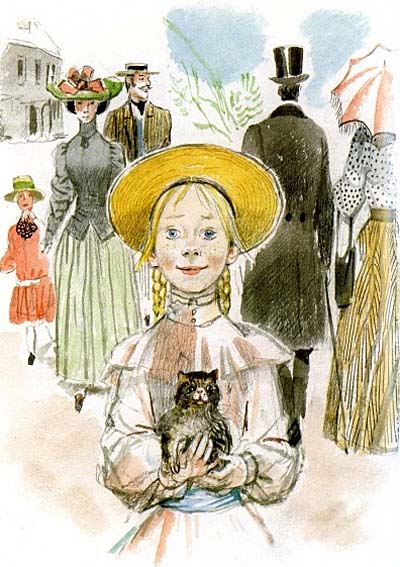
However, Eleanor H. Porter seems to want readers to focus most on how the Glad Game affects people with physical disabilities, or “disabling” attitudes. One of the most frequent recipients of the Glad Game is Mrs. Snow, Pollyanna’s elderly and bedridden neighbor. Nancy brings food to her almost every day, but explains Mrs. Snow is never satisfied with what she’s given. If she’s brought chicken, she wants lamb’s broth. If she’s brought lamb’s broth, she’ll say she wanted calf’s-foot jelly, and on and on. Additionally, Mrs. Snow seems obsessed with dying. When Pollyanna first meets her in the film, she’s choosing the lining for her coffin. It’s unclear whether Mrs. Snow is a hypochondriac or truly ill. However, as with Colin Craven, everyone treats her as “an invalid”–disabled. And in the world of Pollyanna, again,”disability” = bad attitude borne of no quality of life. Mrs. Snow only becomes more pleasant and docile after Pollyanna teaches her the Glad Game, and Snow “warms up” to the idea. In a nutshell then, Pollyanna, an able-bodied person who conforms to the expectations of her age and gender, and maintains a pleasant attitude, becomes the hero for another woman who does not conform. In fact, Mrs. Snow can’t conform to her gender expectations because of illness and disability. Therefore, Pollyanna reads as her best hope for quality of life.
A new reader or viewer might wonder if Pollyanna’s Glad Game and associated philosophy could ever fail her. They do, after Pollyanna sustains a disability. She falls when climbing a tree and sustains a spinal cord injury, leaving her paralyzed from the waist down. The film adds this happened because Pollyanna sneaked out to a charity fair Aunt Polly forbade her to attend. Pollyanna would’ve gotten back into her room with no one the wiser, except that she was juggling the beautiful doll she won in a fishpond game. Her attempt to save the doll made her lose her balance. This adds an element of selfishness to Pollyanna’s existing misdeed. It implies paralysis is a direct punishment, perhaps from God Himself. Such an implication might be the reason Pollyanna becomes listless and depressed after her injury. Recall she is a minister’s daughter and, though she doesn’t read as a “Christian” character, she embodies idealized virtues of the faith. Punishment or not though, Pollyanna cannot deal with her injury. She can’t find anything to be glad about when she’s on the receiving end of the tragedy of disability.
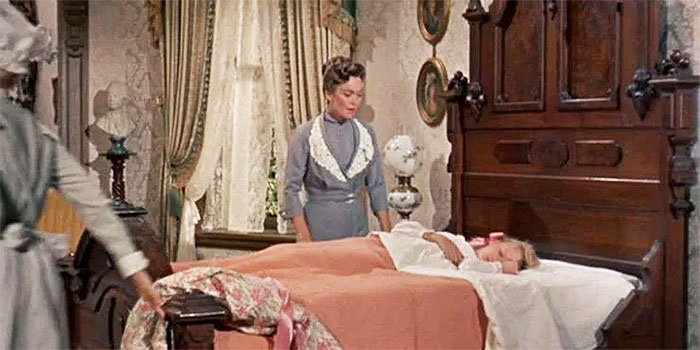
Disabled and a Martyr
Of course, the idea of disability as tragedy is not Pollyanna’s fault. As with the other protagonists we’ve studied, she’s simply growing up in an era when people with disabilities had few options. Again, death was one of the only options. While Pollyanna isn’t at particular risk of death, one could argue her depression will lead to a downward spiral. In her era, suicide would be even more taboo than it is today, but she could refuse medical treatment even if the adults in her life pressed hard for it. She could stop eating or embrace a short-lived role as an angelic “invalid” who “learned her lesson” from trying to save a doll. She wouldn’t be the first protagonist to do so, either; other paralyzed girls like Klara from Heidi or Cousin Helen from What Katy Did, fit this role. Era conventions aside though, Pollyanna is set up to become yet another CWD who has no agency. She has made her last self-determined decision, and will apparently pay for it by becoming a victim.
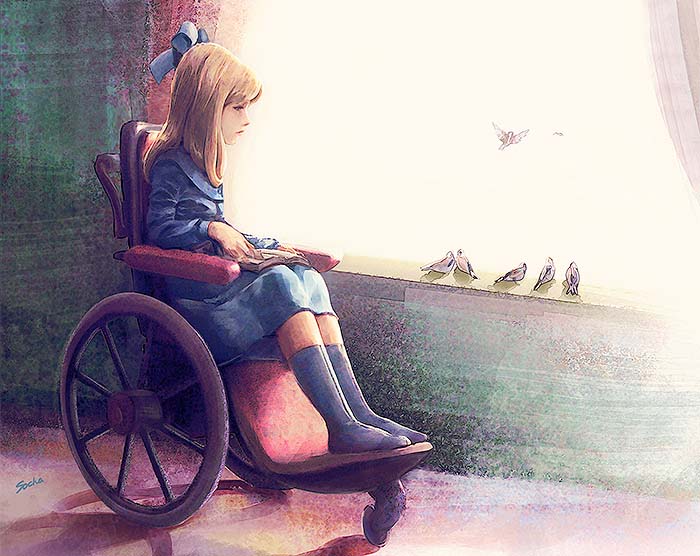
As with Colin Craven, how much of this Pollyanna brings on herself is debatable. Yet with Pollyanna, this facet is even worse. She’s not a spoiled brat, so the implication is, “Good children, good people, do not deserve disability.” Her depression is handled in a way that disrespects people living with the real condition, in any era. And because Pollyanna is a girl in a pre-feminist time period, the implication is, “Disability is a shame, but this brave little girl can handle it. It won’t keep her from conforming to the expectation of submission.”
The biggest complaint modern readers and viewers have against Pollyanna though, is that Pollyanna doesn’t keep her disability. A “simple” operation will help her regain full use of her legs. In the film, we see Aunt Polly and her fiance-to-be Edward Chilton carrying Pollyanna downstairs to meet the train for the hospital, the whole town grinning and cheering her on. Pollyanna herself has perked up, too. She will get to “throw off” her disability, and so has already “thrown off” her depression. Once her legs are fixed, her “glad” identity can return and keep brightening the lives of those less “glad” or fortunate. Better, Pollyanna faces her journey and surgery knowing she has already made a huge difference in her new town. The people around her are happier and friendlier, especially toward one another. Those in authority, such as the town doctor and minister, no longer use said authority to intimidate or discourage others. Although it took longer than anything else, Pollyanna’s Glad Game has permanently softened her aunt’s heart, so the latter can embrace life again (through marriage and domesticity). Pollyanna has ensured others become their ideal selves and now, having learned the needed lessons of disability, can become her ideal self.
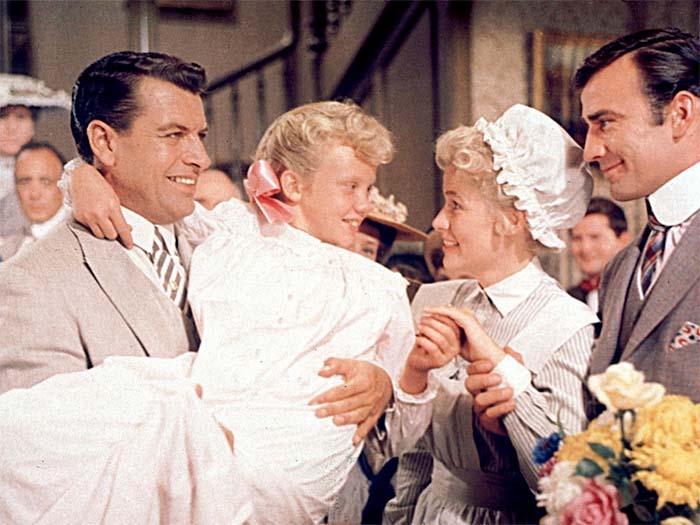
People with disabilities and their abled allies are anything but glad for this happy ending. Some of their reasons are familiar, such as the way Pollyanna presents disability as undesirable, and those with it as pitiable, depressing, or unworthy of empathy (perhaps, unworthy of life). But Pollyanna goes a few steps further. It presents disability as a punishment to the one with it, and the only way for that person, or any person, to achieve permanent “goodness.” According to author Kayla Whaley, Pollyanna also presents “acquired paraplegia” as the only acceptable form of wheelchair use in particular (Whaley 2016). In Pollyanna’s case, acquired paraplegia ups the drama in her otherwise warm and comforting, but saccharine and low-stakes story. In addition, acquired paraplegia gives Pollyanna a “built-in journey” and reminds readers of her book that “[disability] can…happen to you!” (Whaley 2016). Pollyanna doesn’t have to work for anything. She doesn’t necessarily have to learn anything, because despite rationalizations that disability made her “better” and “gladder,” she was already an ideal child. She simply has to put up with disability until she can throw it off–in this case, until she can be rescued via operation.
Complete Physical Death

The second type of physical death a character with a disability (CWD) may face is physical death of both body and soul. Here, the disability is not “thrown off.” The character loses not just identity, but life itself. The implication is that life with a disability is a lesser life, one of endless pain and suffering. In some works, the implication may be that disability is unacceptable because of the environment. That is, if “survival of the fittest” is at play, people with disabilities are obviously not strong or fit enough to survive, so they would naturally die off. If an abled character sustains disability through combat or illness, he or she is likely to perish. However, the disability, not the surrounding cause, will be blamed for the character’s death.
The placement of complete death second in our discussion is intentional. Although the specter of death hovers around almost all characters with disabilities in older works, it was not exactly common for authors to actually kill off disabled characters until after the eras we have covered. Before then, killing characters with disabilities may have gone against the conventions of the “warm family story.” Since so many CWDs were presented as saintly, and since so many were children, it may have seemed cruel to kill them, either because they were so good or had so much life left to live. However, fiction became much grittier after the Victorian and Edwardian periods. Works tend to present all of life’s realities, including death of the weak or disadvantaged. This trend can be found in older, classic works just like “death of disabled body” can. But while the stereotype of the saintly, sickly disabled person in danger of the Grim Reaper has faded, complete death of CWDs can still be found in modern works as well.
Of Mice and Men
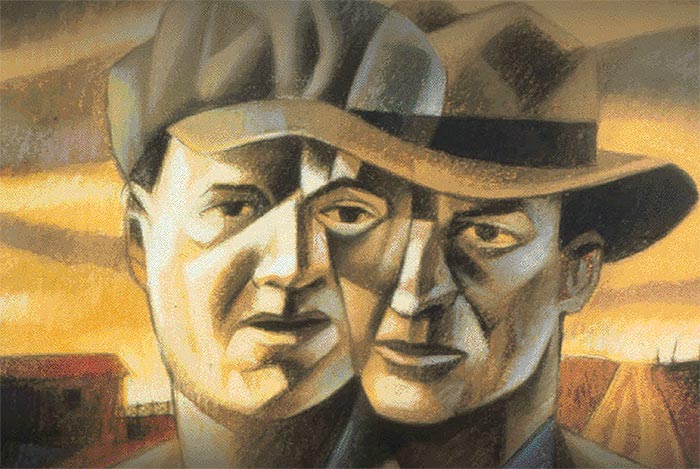
Published in 1937, John Steinbeck’s novel is probably one of the best-remembered examples of complete death for a CWD. It’s a huge departure from the archetypes and tropes we’ve seen thus far, not only in terms of characters and plot, but creator. According to nobelprize.org, Steinbeck was a fan of “rough and earthy humor,” perhaps because of his experience “[working] his way through college and…[establishing] himself as a free-lance [sic] writer,” in an era when writers were guaranteed hardscrabble existences (Nobelprize.org). Steinbeck’s novels delved deeper into “aggressive social criticism” than many of those that predated them. But Of Mice and Men doesn’t read as a criticism of how people with disabilities were treated in the 1930s. If anything, the novel makes Steinbeck “complicit” with the eugenics-based thinking of his era (Sarah Catherine Holmes). Holmes, for instance, argues Of Mice and Men is proof of Steinbeck’s “concern with the crisis of masculinity eugenics fostered” than the lives of real people with disabilities (Holmes).
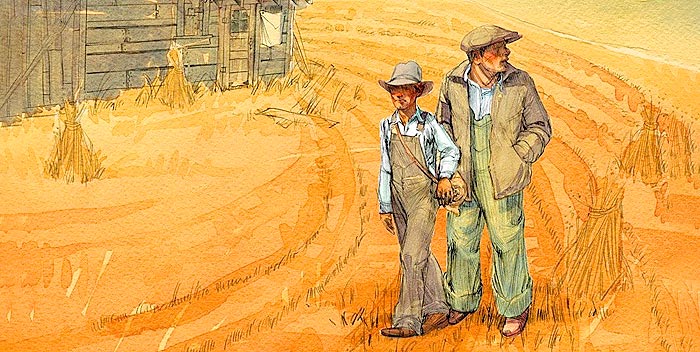
Steinbeck’s novel, and the accompanying 1992 film, center on George and Lennie, two American migrant workers who’ve come to California seeking work during the Great Depression. They dream of starting their own farm in a few years, or at least George does. Lennie doesn’t have a good grasp on what farming entails. All he knows is, George promised him when they had a farm of their own, Lennie would get to tend the rabbits. Lennie is an “imbecile giant” (Nobelprize.org). According to author Clare Lawrence, he presents with “learning difficulties and…many characteristics of autism” (Lawrence). Lennie is also a stereotype of intellectual disability. His speech is thick, impeded, and childlike; he’s unable to perform basic life skills; he appears to lack any long-term memory and fixates on particular interests, such as rabbits and more generally, soft things. This particular fixation, plus Lennie’s unawareness of his strength, has led him to unintentionally crush mice to death on several occasions.
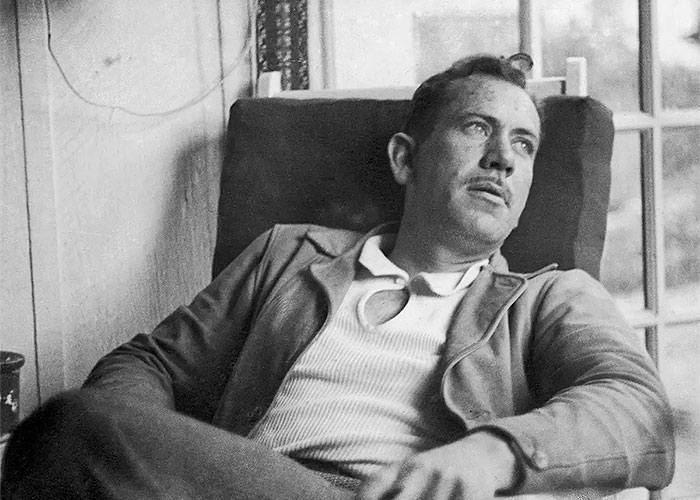
According to George, Lennie is dead weight or what TV Tropes calls “The Load.” George only tolerates Lennie because he promised the latter’s Aunt Clara to look after him when she died. He often reminds Lennie of how helpless he is without him–“How’d you eat? You ain’t got sense enough to find nothin’ to eat,” he says as early as the first chapter (Steinbeck 13). Clare Lawrence notes George also gives Lennie no agency. Any time Lennie “attempts to ‘do his own thing,’…George retakes control. Lennie is completely subordinated to George” (Lawrence). Because readers see George providing Lennie with basic care, or scolding him for doing things like carrying around dead mice, they are primed to sympathize with abled George over disabled Lennie. Worse, because Lennie has never had agency, and since George takes physical care of him, he sees George as a friend and ally. Never mind that George can be physically and verbally abusive to Lennie, slapping him and calling him names like “son-of-a-bitch” (Lawrence).
But Lennie is still a person, yes? He has specialized interests, such as animals, and he shows a desire to help George work and farm, thus involving himself in a non-disabled, neurotypical world with abled peers. Actually though, according to Clare Lawrence and other scholars, these traits aren’t enough to make Lennie human. Lawrence notes Lennie is described as “other” or “non-human” from Of Mice and Men’s first pages. Steinbeck characterizes Lennie as “dragging his feet…the way a bear drags its paws” and “shapeless,” as in, without human form (Steinbeck 2).
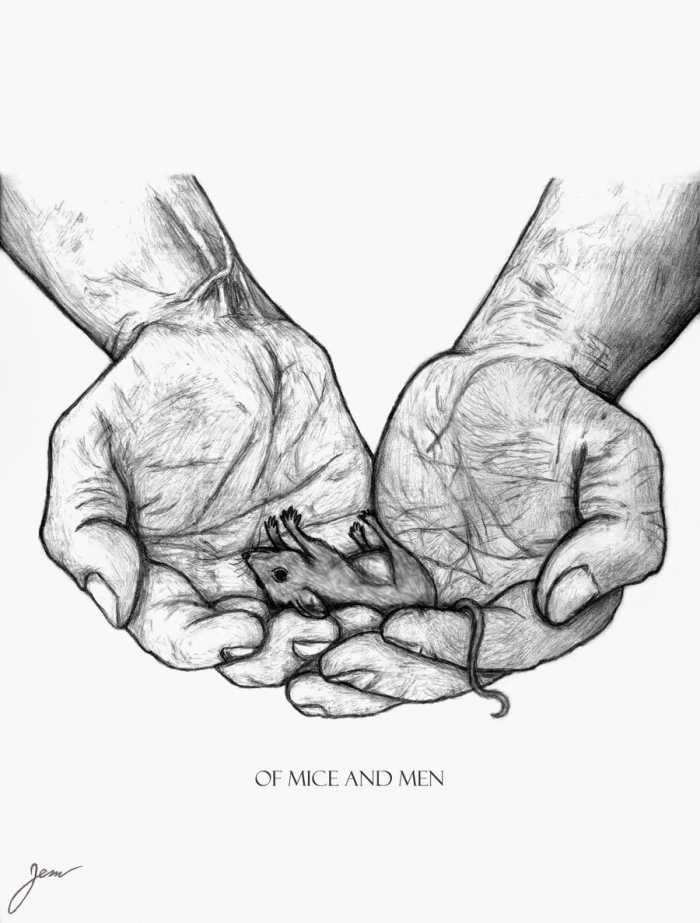
Disabled Characters as Non-Persons
Lawrence notes that although all Of Mice and Men’s characters are “animalistic” to an extent, eking out their existence in a harsh world, Lennie is more animal than the others (Lawrence). She highlights the fact that while characters like George, Slim, and Candy are expected to care for animals as part of farm life, “Lennie is not given sufficient human status to be able to care for animals lesser than him” (Lawrence). Lennie does try to care for animals, such as when he is given a puppy. But because he has never been educated meaningfully, or given agency, Lennie only knows to pet and manhandle said puppy. At one point, Lennie smacks and kills the puppy, perhaps as discipline for perceived misbehavior. No one considers Lennie may have done this because of how George treats him–calling him a “good boy” when he pleases George, and abusing him when he doesn’t. Instead, Lennie’s killing the puppy is more evidence of him being “barely contained” and in need of “segregation from society” because giving him freedom and agency of any kind ends in disaster (Lawrence).
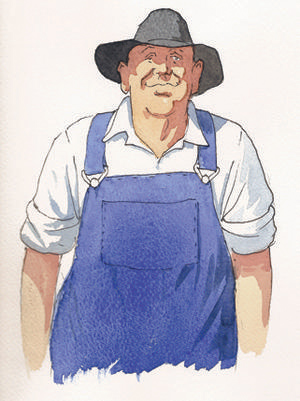
Lennie, then, is an ultimate object of pity in most readers’ and viewers’ minds. Yet Steinbeck is not content to leave Lennie as a pity object. In fact, because Lennie spends most of the novel “barely contained,” Steinbeck takes every opportunity to characterize him as a “monster” (Lawrence). Granted, this is usually in the context of Lennie not knowing his own strength, as with the dead mice and dead puppy. Sometimes though, it’s in the context of Lennie attacking someone because he thought George was being hurt, or touching and fondling a woman because she had a pretty dress or soft hair. In these situations, Lennie is assumed to be violent, a sexual deviant, or both. Again, the abled majority does not consider any other motives for Lennie’s behavior. In fact, just before the novel’s outset, he was nearly lynched for touching a woman and fondling her red dress. As Clare Lawrence notes, Steinbeck uses these incidents not to point to ableism or incite sympathy for Lennie, but to “other” him further. According to Lawrence, Steinbeck’s “othering” points back to the eugenics philosophy, embraced by proponents like Dr. Peter Singer, that intellectually disabled people are more animal than human.
If Lennie is more animal than human, and if he has engaged in dangerous behavior, it follows that according to eugenics–and Steinbeck–Lennie is a dangerous animal. Dangerous animals must be contained, and put down if containment isn’t possible. George follows this logic to its conclusion after Lennie is accused of raping and murdering the wife of Curley, an antagonistic and abusive ranch hand. In reality, Lennie didn’t rape Curley’s wife; she actually let him stroke her hair and face, fondle her, and embrace her. But Lennie, still unaware of his own strength, ended up accidentally breaking her neck. However, no one defends Lennie, except to point back to his intellectual disability as a weak excuse for what he did. Using soothing tales of the rabbits Lennie wants to tend, George takes Lennie off into the woods and shoots him in the head, point blank.
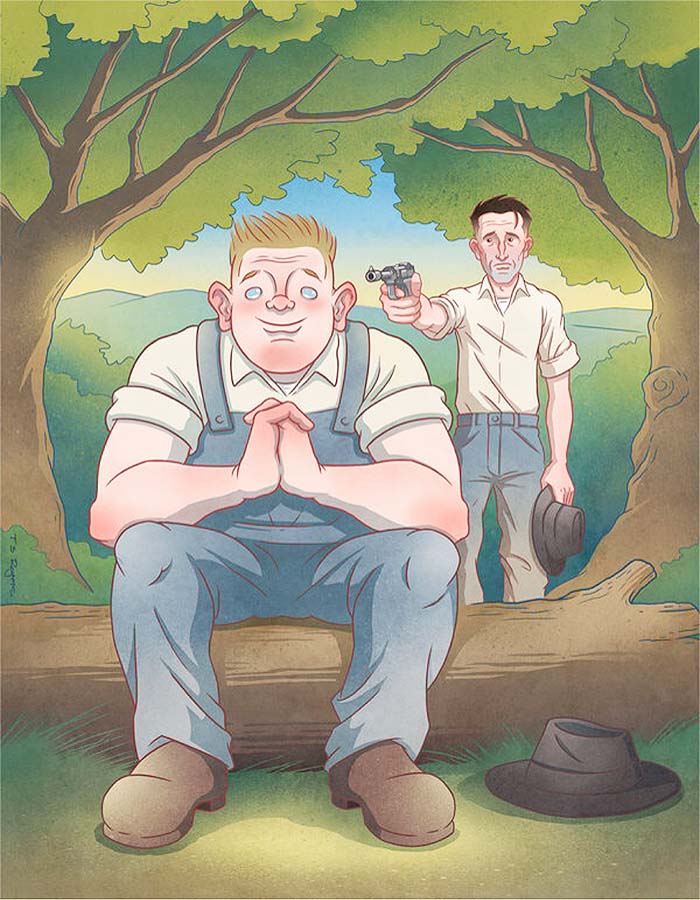
Defending Lennie’s Demise
Lennie’s killing remains controversial among Of Mice and Men readers today, almost a century after its first publication. Clare Lawrence writes that in many discussions, the central question is not whether Lennie’s death was murder or whether there were alternatives to his murder. The question, rather, is “to what extent George…was justified” (Lawrence). Even in 2021, reader and viewer sympathy remains with George over Lennie. Mercy killing is still seen as a better option than trying to understand Lennie and relate to him as a human.
The reasons are simple and familiar. The majority of the novel’s audience is not disabled; Lennie’s disabilities were severe; the era in which the characters live had no concept of disability rights, let alone inclusion. Laws like the Americans with Disabilities Act (ADA) and Individuals with Disabilities Education Act (IDEA) did not exist; the most common fate for someone like Lennie was institutionalization. Some scholars also point out that according to Steinbeck, Lennie was based on a real person, a mental institution inmate he met once (Nobelprize.org).

Whatever the reasons for Lennie’s death, the truth remains. At Of Mice and Men’s end, we have a dead body, one that belonged to a human who had disabilities. Lennie had little to no chance of a future outside of George, with whom he probably trauma bonded more than anything. Clare Lawrence points out Lennie also had no real hopes and dreams; even his dream of tending rabbits wouldn’t have panned out had he lived, because he would’ve killed the animals (Lawrence). Lennie then, becomes a perfect example of how not to handle death in the context of disability. He dies without choice, without agency, without the simplest acknowledgment of humanity. The fact that his murder is considered justifiable in any context indicates the conversation about disability and death is far from over.
Flowers for Algernon

First published in 1959, Daniel Keyes’ Flowers for Algernon was one of the first novels after Of Mice and Men to feature a protagonist with a disability. It came onto the literary scene during a time of “awakening” for people with disabilities and their families (mn.gov). According to the mn.gov project “Parallels in Time: A History of Developmental Disabilities,” 1959 was smack in the middle of “The Parents’ Movement,” wherein parents “demanded [better] services for their sons and daughters,” because of the “poor living conditions” in institutions. However, The Parents’ Movement and subsequent “awakening” were not yet inclusive. They did not yet fully acknowledge people with disabilities as people. In fact, efforts of The Parents’ Movement were encapsulated under the slogan “The Retarded Can Be Helped” (mn.gov). Most of the efforts were focused on improving the lives of “the mentally retarded,” who were overwhelmingly institutionalized, often from birth.
Daniel Keyes’ novel reflects this attitude in the characters of Charlie Gordon and Algernon. Algernon is a lab mouse undergoing scientific experiments to increase his intelligence. Charlie is a student and resident at The Beekman College Center for Retarded Adults. Note this is not a college; it is an institution that attempts to educate disabled adults to the extent the able-bodied staff feels they can be. Charlie, for instance, has an IQ of 68, over 30 points below average, and works with staffer Alice mostly on basic literacy. Charlie works as a janitor at Donner’s Bakery, where his coworkers bully or ignore him, and his supervisor makes clear Charlie’s job is given out of charity. Charlie is in his thirties, but does not act as an adult in any way, nor is he given any agency over any decisions.

In fact, it is Alice Kinnian, Charlie’s social worker, who decides when his life will change. She recommends Charlie as a candidate for Dr. Strauss and Professor Neumer’s intelligence-increasing procedure. Strauss and Neumer take Charlie on, subjecting him to several tests before the actual surgery. One such test pits Charlie against Algernon in solving a maze. Algernon, who has already undergone the intelligence-increasing procedure, has at least triple Charlie’s IQ and initially beats him at every maze. Algernon and the mazes become a microcosm for Charlie’s journey, as the latter learns more about the world, himself, and his place in it. To wit, Charlie undergoes Strauss and Neumer’s operation, and in a short period, his IQ triples, from 68 to around 210, the genius range. However, increased intelligence does not mean Charlie is treated as an intelligent, or even fully capable and functioning, person.
Charlie’s Dubious Cure

Readers are meant to root for Charlie as he explores everything from art, politics, and religion to romance and sex. The “progress reports” that make up his story show Charlie going from barely literate to mastering grammar and punctuation quite literally overnight. Charlie gets two promotions at work, plus associated raises, and begins living independently in a New York City apartment. He admits his attraction to Alice and takes her to the movies, somewhat as a romantic experiment. But despite all this, Strauss and Neumer view Charlie more as an animal who has overcome the “instincts” of intellectual disability than a person. At one point, Charlie discovers a bakery coworker named Gimpy has been stealing and undercharging employees for kickbacks. When Charlie asks Strauss and Neumer if he should confront Gimpy or tell Mr. Donner, they discourage him. Neumer tells Charlie he was “an inanimate object” during most of Gimpy’s crimes, making him unaccountable for saying anything. Whether Charlie was accountable in any sense, the fact that Neumer sees him as a now-animated “object” is at best disturbing and at worst blatant dehumanization.
Other characters in Flowers for Algernon don’t treat Charlie any better after his operation. Formerly, Charlie’s coworkers taunted him daily, set him up as the butt of jokes, and made his name a byword (making a mistake = “pulling a Charlie Gordon”). But now that Charlie has had his operation, his coworkers are upset at his intelligence and pressure Mr. Donner into firing him. Alice tries to reciprocate Charlie’s affection, but her attempted kiss triggers traumatic memories for him. While both decide they cannot continue in a relationship, Alice behaves as if the burden is on Charlie for experiencing trauma. Charlie makes a new friend named Fay, but she rejects him on the grounds that his apartment is too neat and he is too intelligent for her. Charlie finds a newspaper report that says his sister Norma believes he is a resident at the Warren State Home for intellectually disabled adults, and that essentially, his family has long since moved on as if he did not exist.

Essentially then, Charlie has no place in the world either as a genius or an intellectually disabled person. This, plus his slowly decreasing intelligence, contribute to Charlie’s new, cold-hearted nature. Said nature is on full display when he visits the Warren State Home, knowing he will end up there for the rest of his life and hoping to find some camaraderie there. Instead, he notes the blank and hopeless faces of the residents, and notes he is nothing like them, nor does he wish to be.
Professor Neumer mentions this contrast when he brings up who Charlie used to be versus who he has become. As a person with an intellectual disability, Neumer says, Charlie was open and warm-hearted, but intelligence has made him arrogant and self-absorbed. Even when Charlie points out Neumer’s arrogance, it’s treated as an afterthought. Readers are meant to think Charlie was “better” with intellectual disability, which seems to indicate he is better off with a disabled identity (as opposed to Tiny Tim, Colin Craven, and Pollyanna Whittier). But that line of thinking is flawed on three counts. One, the implication is, intelligence made Charlie arrogant when it doesn’t necessarily do so for abled people. Yes, Neumer and Strauss are arrogant, but Keyes implies their arrogance only happened after long-term exposure to the scientific world, which an intellectually disabled person wouldn’t have. Two, Keyes implies that not only intelligence, but experience and the ability to make his own judgments, made Charlie an unpleasant person. In other words, intellectually disabled people can’t handle self-determination because they will misuse it.
This theory persists among disability experts today. Real adults with Down Syndrome, learning disabilities, some forms of autism, or other intellectual disabilities are commonly placed on rigid plans and schedules, even in their own homes. In minute detail, these plans explain things like when these people can get up or go to bed, when and what they’re expected to eat, how often and how much they may spend money, and how they will spend leisure time. Caregivers, usually from outside agencies, carefully monitor such plans so the individual with a disability will use time wisely or not get “out of control,” whatever that means in the caregiver’s estimation.
The third and final way in which this thinking is flawed goes back to how Neumer and Strauss, like most other abled people, treat Charlie. Neumer and Strauss see Charlie as a non-person, whether he’s intellectually disabled or a genius. What Charlie absorbs then, is that highly intelligent people naturally treat others as non-persons. They are naturally arrogant and selfish, serving the brain at the expense of the heart. This progression exposes another key flaw in Neumer, Strauss, and people like them, who use intelligence as weapons against people like Charlie. That is, people like Neumer and Strauss persist in the belief that disabled people, particularly the intellectually disabled, can only mimic simple behaviors (“monkey see, monkey do.”) Thus, they blame disabled people when they mimic “non-typical” behavior or “act disabled” (or the phrase’s variants, such as “act autistic.”) What these abled, “intellectually superior” people forget, however, is that if they are being mimicked, they are the ones providing negative examples. They are the ones engaging in “bad behavior.” Arrogance, selfishness, rudeness, or any other negative behaviors are treated as disability issues alone, when they are truly issues of all human behavior.
Daniel Keyes fails to address this possibility, though. As a genius, Charlie is almost vilified, his new negative characteristics played up to a ridiculous point. This causes the reader to lose sympathy for Charlie, and to believe he’s better off as a “retard” because “retards” allegedly can’t process complex emotions or ideas. That’s unfortunate, but at least their lack of complexity means people like Charlie can’t offend or hurt anybody. At this point, the reader probably doesn’t want Charlie to die. After all, nobody ever got a death penalty for being a jerk or a snob. But having observed his intelligence combined with arrogance, the reader might want Charlie’s “new self” to die. In other words, Charlie makes the reader more comfortable, less offended, if his abilities “die” for the sake of reversion to what abled people think of as a “good” person.
When the “Cure” Wears Off

What then, is left for Charlie Gordon? According to Daniel Keyes, the only answer is institutionalization and eventual death. Charlie himself does not die in the novel, but Algernon does, after losing all his intelligence. As before, Algernon serves as a microcosm for Charlie, who has regressed back to an IQ of 68 and moved permanently into the Warren State Home. He will eventually die there and has concluded death is the only sensible possibility for him. Charlie’s last words to the reader aren’t for himself. Instead, he asks whoever reads his progress reports to place flowers on Algernon’s grave. The request hearkens back to the warm-hearted Charlie that Neumer and others professed to prefer, and the implication of Charlie’s death might imply some peace for our protagonist.
In reality, Algernon’s death and Charlie’s eventual one raises a lot of red flags for readers. The deaths smack of ableism and call into question not only Daniel Keyes’ intentions in writing Flowers for Algernon, but how people with disabilities are treated in real life. Specifically, Charlie spends the novel on two opposite ends of the intelligence spectrum. He is accepted on neither, which readers could chalk up to the fact, both ends of the spectrum are so extreme. But extremity aside, Charlie reads as a character who is only accepted insofar as others let him be. Like Lennie, he is given no agency and no humanity. Charlie is not treated quite as much like an animal as Lennie was, but readers understand this is because he showed high intelligence throughout some of the novel. Had he not, he would’ve been treated much like Algernon, except with a larger, biped body. Additionally, Charlie only gains humanity through intelligence that Alice, Neumer, and Strauss give to him. This construct implies intellectually disabled people can only participate in life until the charity of the able-bodied runs out. At that point, they can either “sink or swim”–live life on the able-bodied majority’s terms, or regress and die.
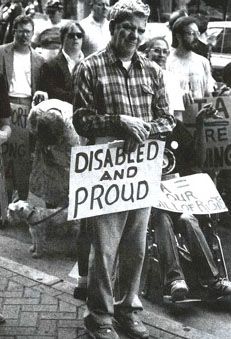
Charlie’s journey also raises red flags in regard to its real-life context. Recall, Flowers for Algernon was written during The Parents’ Movement, where disability rights were focused mostly on non-disabled parents or caregivers. Using their lenses of disability, these parents and caregivers gave their loved ones labels like “The Retarded.” The parents and caregivers, not disabled people themselves, fought to convince the wider world “The Retarded” deserved better than isolation, abuse, and squalor.
Of course, Charlie Gordon doesn’t experience institutional abuse. We must also remember, there is no such thing as politically correct history, meaning real people shouldn’t be judged for information or morals they did not have. Yet we can and should judge Flowers for Algernon for what it represents. The novel is in fact a story of a “retarded” man getting help. But Charlie is only “helped” when he becomes part of the abled majority. Once he loses the abilities he gained, he returns to the status quo of “retarded.” Charlie’s best hope still lies with “his own kind”–intellectually disabled people, and them alone. He will no longer be able to read or write effectively, learn or understand, or participate in reciprocal relationships. Daniel Keyes implies this is the fate of all people like Charlie. They may be cared for. They may even be loved. But their lives remain so small and yes, so animal-like, that the deaths of such people are their best outcome.
Stuck in Neutral
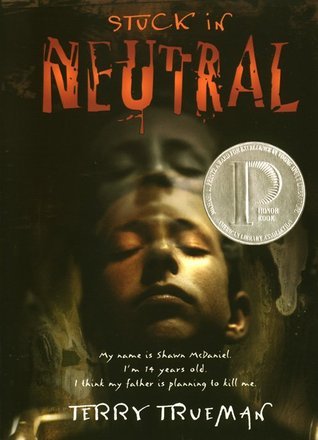
Author Terry Trueman’s Stuck in Neutral is a young adult (YA) novel first published in 2000 and reprinted in 2012. It is unique among the other works we’ve discussed because of its publication and reprint dates, and the way it has been received since then. Stuck in Neutral was first published ten years after the Americans With Disabilities Act (ADA) was signed into law, and 25 years after the birth of the Individuals with Disabilities Education Act (IDEA). The novel’s 2012 reprint came at the beginnings of a movement toward full inclusion of people with disabilities in society. Stuck in Neutral, however, does not promote inclusion or acceptance of PWDs, even in our contemporary time period. It does not promote the rights, education, or human needs (as opposed to “special needs”) of PWDs. If anything, Trueman’s book presents the exact opposite, making it rather “stuck.”
The protagonist of Trueman’s novel is 14-year-old Shawn McDaniel. He has an eidetic, or photographic, memory and lives with severe cerebral palsy (CP). The latter is the focus of the book, Shawn’s life, and how others relate to Shawn. As our protagonist puts it, he can tell you anything you want to know about say, George Washington, from his wooden teeth to his relationship with Thomas Jefferson. But actually ask Shawn about “the old dead first prez,” and you won’t get any of that information. All Shawn can do is “sit there and drool, if my drool function is running…or whiz my pants…or go ‘ahhhh’ if my voice…hasn’t kicked in” (Trueman 4). Therefore, Shawn’s family, teachers, and everyone else around him think he’s “dumb as a rock,” and Shawn can’t do anything to convince them otherwise (Trueman 5).
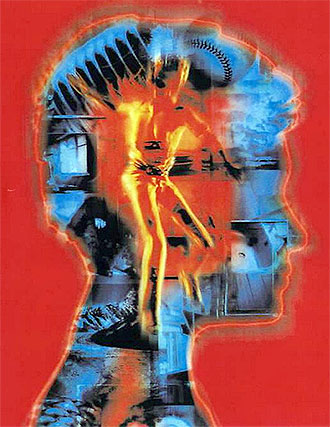
Shawn describes undergoing yearly IQ tests so his educators can determine what goes in his Individualized Education Plan (IEP). Shawn describes questions like, “What’s 2 + 2” and of course, “Who was George Washington?” He also mentions being asked to match pegs or colored shapes to proper holes. Shawn knows every answer, but can’t verbalize any, and can only throw or drop the pegs and blocks. His IQ has been estimated at 1.2, or a mental age of 3-4 months. Combined with his inability to communicate, this means Shawn remains uneducated, unexpected and unable to do anything of value.
The premise of Stuck in Neutral is discouragingly faulty for a contemporary novel about a person with CP (or any disability). As Shawn reminds readers, there are ways for PWDs in his era to communicate. He snarks about some of them, mentioning somebody could’ve put his hand over a Ouija board and let him choose letters. Yet a lot of the communication alternatives he mentions, such as use of computers or picture boards, are available in real life. By 2000, some had been available for at least a few years, even if in their roughest forms. The implication then, is not so much that Shawn can’t communicate or learn to use technology. It’s that Shawn is not allowed to do these things, presumably because of an abysmally low IQ estimation. One could make the argument that Terry Trueman doesn’t believe PWDs should be allowed to do these things unless they can communicate the “normal” way, which would explain Trueman placing Shawn in this position.
Disability and Self-Hatred
Trueman’s novel is not just problematic in how it presents Shawn. It’s also a huge step backward in disability representation because of how Shawn presents himself and thinks about his life. Throughout the book, Shawn calls himself “retard” or “retarded,” a word that was considered offensive in 2012 and is now widely regarded as an ableist slur on a par with the N word. Shawn embraces the idea he is stupid and incapable, and inferior to other people, such as siblings Paul and Cindy. He makes negative comparisons between himself and Paul, a star athlete, and describes Cindy as “Special Education Teacher of the Year” for teaching him to read while he “sat there looking retarded” (Trueman 4). Throughout the book, Shawn talks about strengths like his memory, but tends to do this in conjunction with what he can’t or won’t do. Thus, readers are more apt to see Shawn as a bitter victim rather than an intelligent, understandably snarky disabled person who is coping as best he can with an ableist environment.
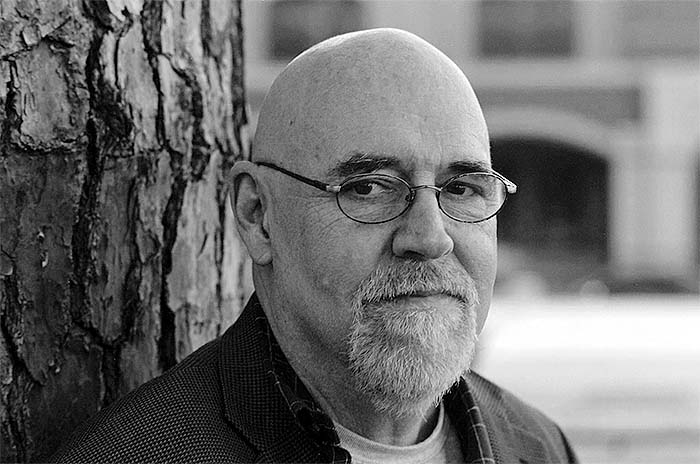
The biggest problem with Stuck in Neutral, though, is that its whole plot centers on euthanasia. We find out Shawn’s father Sydney is a Pulitzer Prize-winning author who got the honor for a poem about Shawn, implying he used his son as a form of inspiration porn or pity. Sydney left his family shortly after writing the poem, ostensibly because of Shawn’s cerebral palsy. Worse than that, Sydney has appeared on a talk show without Shawn, discussing how difficult his family’s life is. He appeared on the same episode as Earl, a father who chose to euthanize his disabled son after concluding the son was suffering. When Sydney is asked if he would follow Earl’s example, his answer is vague, perhaps intentionally so. Sydney assumes Shawn does not know or understand his appearance on the talk show or his use of Shawn to get awards and attention. He also assumes Shawn is suffering, with no hope of any change or a true future.
Shawn spends the rest of the book speculating about and fearing Sydney’s intention to kill him. He doesn’t fight against the possibility because again, he can’t. In fact, despite his fear, Shawn seems somewhat at peace with the euthanasia idea. Shawn claims whatever Sydney does, he’ll “soar” as a result. Shawn and his family don’t discuss any beliefs about the afterlife, so it’s unclear whether Shawn’s referring to Heaven. However, his verb choice implies the idea of physical freedom. Communication-related and emotional freedoms are similarly implied. In other words, whether or not he wants or chooses euthanasia, it is Shawn’s only hope. Trueman actually takes this idea a step further than Steinbeck or Keyes did, because Trueman doesn’t just imply Shawn’s life is worthless. Trueman implies Shawn’s very existence is worthless, and that since said existence can’t be changed, euthanasia is the closest thing his family has to a solution.
Continued Defense of Disabled Death
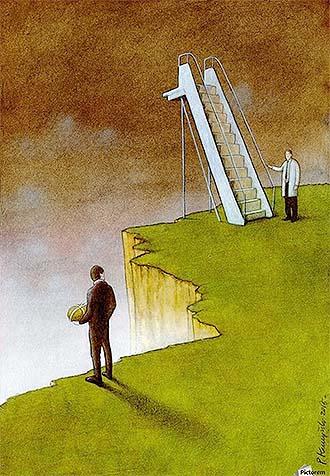
Interestingly, readers never learn if Shawn is euthanized or not. He’s given an ambiguous ending that almost requires readers to speculate–and argue about the value of his life. However, the events leading up to the ending are more than a bit suspicious. Shawn is left alone with a caregiver while the rest of the family goes on a trip; it’s implied this occurs often. Sydney comes over while Shawn is sleeping, and…the novel ends. Coupled with Sydney’s poem and appearance on the talk show, plus other small incidents like asking an annoying crow if it wants “a piece” of Shawn, euthanasia seems almost a given. The fact that the decision isn’t made is actually another strike against Trueman. The events read as if the ending were left intentionally ambiguous so if controversy ever arose, Trueman could honestly say Shawn lived, giving himself an “out.”
Controversy did arise–one recorded incident. The Wikipedia article on Stuck in Neutral reports some parents protested the book when it was assigned to their kids’ classrooms. However, the protest had nothing to do with euthanasia. Rather, the parents complained about the “sad and violent” subject matter, making Stuck in Neutral just another in a long line of contested books that faced the same complaints. The article goes on to state Stuck in Neutral is often required reading, not just in classrooms, but in special education classrooms. In other words, students with disabilities, who are already set apart in negative ways, are required to read a book about a boy who faces euthanasia and can do nothing to stop it. Like Me Before You, Stuck in Neutral becomes a disability snuff novel, aimed at a disturbingly young and impressionable audience.
Emotional or Mental Death
Despite the continued presence and praising of novels like Stuck in Neutral, authors are trying to change the trajectory of disabled characters. If anything, articles on sites like The Mighty and Literary Hub frequently urge writers to avoid scenarios in which a disabled character dies only because of disability. Writers also urge each other to avoid this trope, as well as companion tropes like the healing of a character with a disability (Disability Writing). Yet, some less obvious “death tropes” still exist within disability representation. These often occur when a disabled character faces emotional or mental death rather than physical death.

For the purpose of our discussion, emotional death is a form of grief, but not simply the emotion of grief. A character experiences emotional death when failing to meet their external and internal goals means their life will have a permanent negative trajectory. The character will stay alive, but will experience a lesser life. Furthermore, they may never withstand the grief and trauma that came with failing to reach their goals.

Plenty of characters without disabilities experience emotional death, with or without the threat or outcome of physical death. Emotional deaths are some of the ones we as readers most often remember, because they’re so poignant and relatable. We find the threat of emotional death in The Odyssey‘s Odysseus, who may never get home to Ithaca and his family, or if he does, may find his wife and son have left him. We find it in Romeo and Juliet, where the title couple commits suicide because they despair of ever being together. Emotional death occurs throughout today’s popular YA series, from Harry Potter to The Hunger Games, as heroes like Harry and Katniss fight to preserve not only their physical worlds, but the safety, love, and hope therein.
Emotional or mental death then, is probably the most accessible type for characters with disabilities. Simply by allowing them to live, writers who put CWDs at this risk are acknowledging, disabled people have a wide range of experiences, emotions, opinions, and goals. Additionally, focusing on emotional death rather than physical removes the implication that PWDs are better off dead. After all, if they were better off dead, they would not exist to tell the story at hand. Even better, placing a disabled character at risk of mental or emotional death almost forces their creator to examine the true disabled perspective. Risk of emotional death implies the character understands the wider world, how their actions affect others, and high stakes, all of which disabled people are commonly not expected to understand.
All that said, emotional death has a few booby traps for CWDs, too. Some of these are equally as problematic as the pitfalls we’ve discussed. Others are less so, but may read as stale if poorly handled. Additionally, the concept of emotional death must be handled with more care if physical death is also a factor, such as in a murder mystery, military saga, or dystopian story. Most contemporary novels featuring CWDs deal with this in some measure, and some are written better than others.
Mine for Keeps
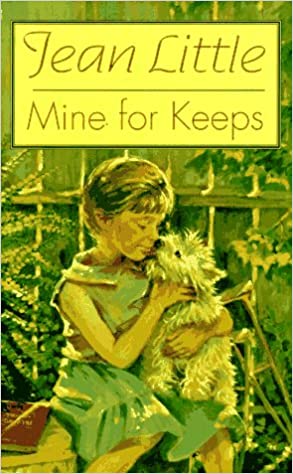
Originally published in 1962, Jean Little’s Mine for Keeps was revolutionary for its day. The children’s novel stars fifth-grader Sarah Jane (Sally or Sal) Copeland, who lives with cerebral palsy (CP). Sal lives in an unspecified Canadian province and, up to the story’s events, has lived full-time at Allendale, a school for children with disabilities. Not much is known about Allendale, but it’s assumed to be an actual school where students are educated academically, on a level with abled peers as much as possible. Life skills are a big part of the curriculum. Sal notes several of her classmates also have CP, and like her, they receive physical and occupational therapy, as well as different levels of help with basic tasks.
However, Sal herself is more capable than almost any of the protagonists we’ve discussed, especially for a book written in 1962. Sal learns and communicates at an expected age level, and although she cannot do fine-motor tasks like buttoning buttons, she does not struggle with basic self-care, nor the understanding of why self-care is necessary. She recognizes her differences, but resists being babied or underestimated. And while Sal acknowledges disability is difficult, she doesn’t have a constantly bitter attitude. When she does get angry or upset, it’s chalked up to her having a hard time, not necessarily because of CP.

Jean Little’s plot is ahead of its time, in that unlike her contemporaries, Sal Copeland doesn’t stay in a disabled-only environment. When we first meet her, she’s coming home from Allendale for good, a “wish come true” she has had for years (Little 1). Little explains Sal’s family has campaigned hard for inclusion and mainstreaming in their town, as well as for a therapy center to be built near their home. Now that the center is operational, Sal can receive needed services without the need for separation from her family or segregation from community life. Sal’s parents and teachers are rooting for her to become as independent as possible, and Allendale’s headmistress has sent Mom and Dad a long letter explaining how they can all make that happen. For instance, the headmistress suggests Sal should wear clothes without fasteners except for large easy ones, since her fingers won’t let her keep hold of buttons and zippers. She also suggests Sal wear a feminine but short haircut, since hairstyling is another fine-motor task. The implication is that while Sal should continue attending therapy and improving life skills, her mastery or lack of those skills should not determine whether or not she can participate in a majority-abled world. Again, Little’s treatment of these issues would’ve been almost unheard of in an era when most disabled people still lived in institutions. To some extent, after many reprints of Mine for Keeps, the idea that a disabled person’s life should focus on more than basic skills remains revolutionary.
It might seem odd, then, to think of Sal Copeland as in danger of emotional death. Mom and Dad have made clear she’s home to stay. Sal asks to go back to Allendale when her new life overwhelms her and is gently but firmly told “no.” Thus, institutionalization, the “death” other disabled protagonists like Charlie Gordon faced, is off the table. Even segregated education is off the table. When Sal struggles to complete a mental math test on her first day in a general ed classroom, her teacher doesn’t shame her. Rather, he admits he should’ve recalled that, because Sal’s writing speed is erratic, she might need extra time. The teacher, Mr. Mackenzie, does everything in his power to accommodate Sal in an era before IDEA and IEPs. He shows compassion without pity, and listens to how his student feels about going from a life where everyone she met was like her, to one where almost no one is. Those who have power over Sal are firmly on her side and determined to help her live on all fronts, as the disabled person she is, not a normalized version.
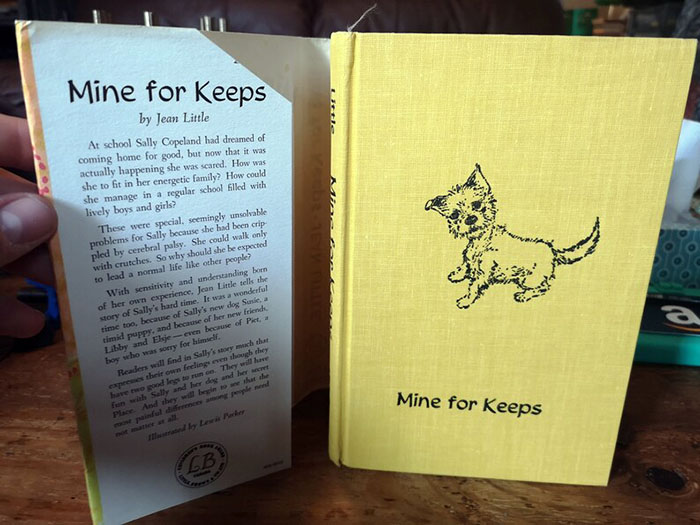
Social Risk and Possible Death
Like kids of all abilities, Sal struggles the most with socialization. The first classmate she meets, Libby, goes out of her way to be nice to Sal, telling her what she needs to know about school, giving her the desk next to Libby’s, and bringing her a library book to read at free period. As the book goes on though, Libby’s enthusiasm for life makes her forget Sal’s CP at times. Thus, Libby looks like she’s pitying Sal or engaging in abled privilege, and the girls clash. At one point, Sal worries she has permanently lost Libby as a friend, a kind of emotional death because until Libby, she had no real friends of her own. (Little implies Sal’s classmates at Allendale were more like warm acquaintances, perhaps because everyone there was so focused on coping with disability).

Sal faces a deeper and riskier emotional arc with a classmate named Elsje and her brother Pieter (Piet). Elsje is a Dutch national student who came to Sal’s school the year before, and who was Libby’s “best friend” first. Out of jealousy and fear, Elsje acts cold to Sal from the moment they meet. She observes Sal dashing down answers while Mr. Mackenzie goes over them after the mental math test, and assumes Sal cheated on purpose. She tends to treat Sal as weaker and more childlike than a typical fifth-grader, such as when Sal witnesses a boy named Luke taunting someone named Piet who it seems might be disabled, too. Sal tries to ask Elsje about Piet, but Elsje assumes she’s upset about Luke’s actions. “Do not worry about him,” she comforts, ready to move on.
Elsje is not a direct threat to Sal’s social independence. That is, she’s not powerful enough to ensure Sal is ostracized if the other girl somehow displeases Elsje or Libby. But Sal recognizes that something, perhaps disability-related, is holding Elsje back from involving herself socially with Sal and now to a degree, Libby. Sal’s unspoken fear is, if Elsje has to retreat from her, Libby will, too. Thus, Sal will lose the friendship of both girls, plus the friendships of a couple other students she’s developing. When Sal learns Elsje’s full story–she’s Piet’s little sister, and Piet has a heart condition–fear grips her harder. Piet, like Sal, is “different.” Sal has learned that people who are different don’t always get to participate. They get babied or bullied, or told that their need for accommodation shouldn’t matter if they’re really equal people. If Elsje, the “leader” of Sal’s friend group, retreats from her, she will communicate, “You are like Piet. Piet is enough trouble. I don’t need you, too.” Sal will be alone again, without any friends that are “hers for keeps.” She may still have friends, but only in the sense her friendship is convenient for the abled majority.
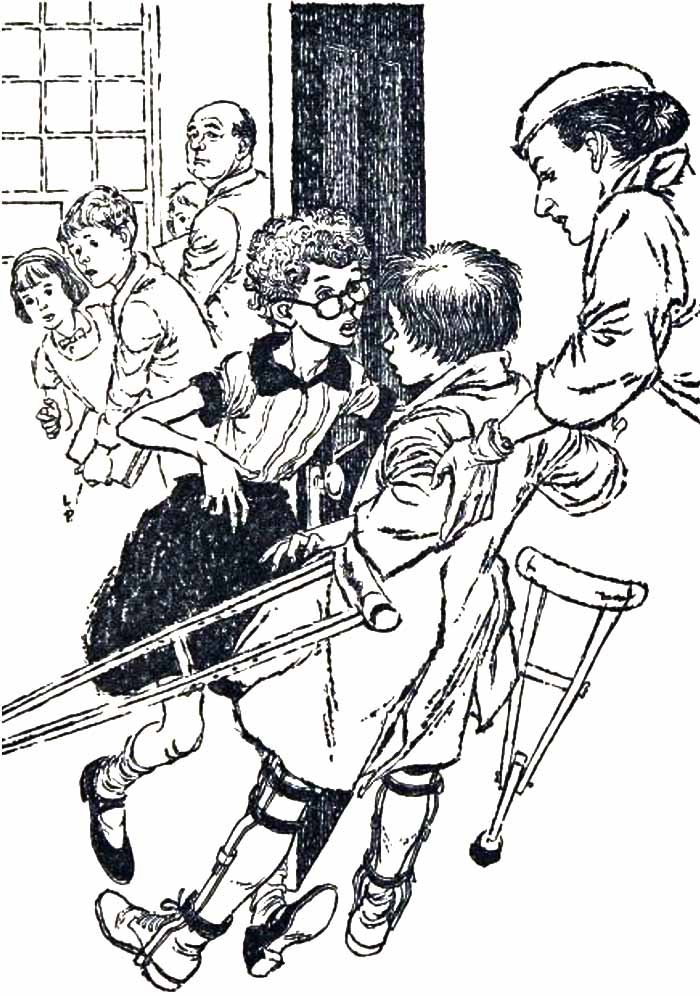
One Step Forward, Two Steps Back
Sal gets a chance to meet Piet, and her struggle intensifies. Jean Little falls into a booby trap with Piet’s character, in that like Colin Craven, he is considered an “invalid” and has a bitter, nasty attitude. To his credit, Piet isn’t as spoiled or vocally self-pitying as Colin. But he is quick to point out what he cannot do, and accuse people like Elsje of mocking him if they suggest he can change his situation. Meanwhile, Elsje skirts the line of acting like Piet’s legitimate heart condition is all in his head. But to Jean Little’s credit, she focuses more on Sal’s emotional development once Piet comes into the story. Some of her treatment is a bit hokey; Sal realizes Piet has it much worse than her, and becomes determined to be more independent. At the same time, Little makes Sal the center of a plan to help Piet and Elsje enjoy life and a true sibling relationship.
Along with the new humans in her life, Sal has a new animal friend, a shy Westie terrier named Susie. It’s tradition for all the Copeland children to have their own pets, so getting Susie says something not only about Sal’s independence, but the expectation that she, like her siblings, will participate in a rite of passage. Indeed, CP or not, Sal becomes Susie’s sole caretaker. For instance, with Dad’s help, Sal engineers a wheeled cart so she can feed Susie without bending down to place her food and water bowls, thus getting off-balance. Sal also learns how to safely hoist Susie onto her bed at night, and help Susie with the anxiety that accompanies her natural shy temperament. These skills in interdependence eventually serve Sal well with humans, especially Piet and Elsje.
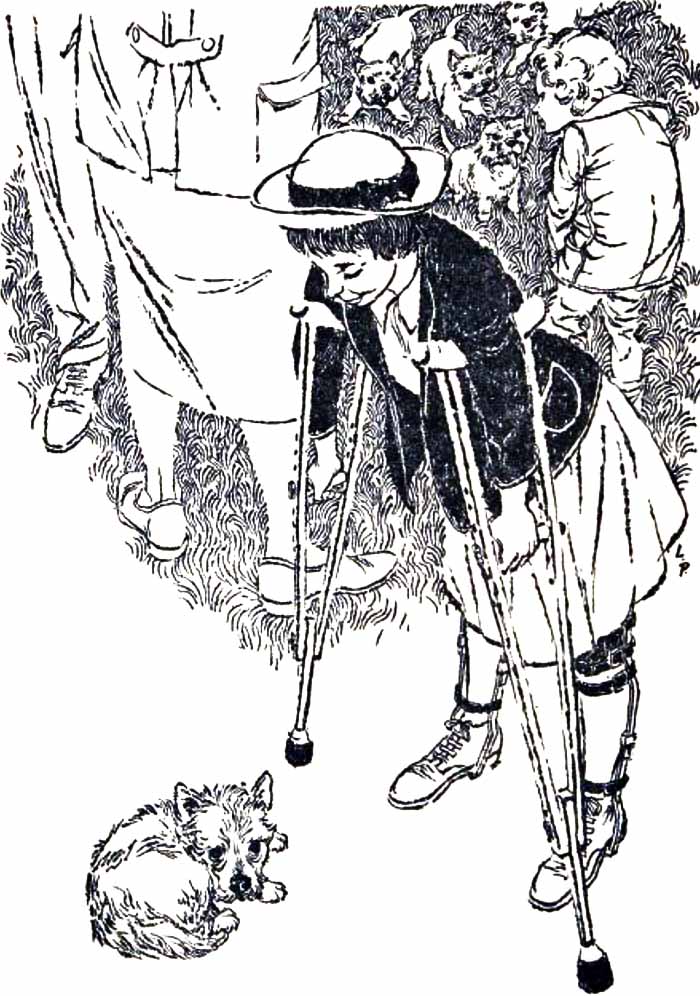
Elsje is pretty close-mouthed with Sal and Libby when it comes to what day-to-day life with her bitter brother is like. But one day, she lets it slip that Wilhelm, the dog who was supposed to be Piet’s, follows her around and obeys her, not because he loves her. Rather, Piet refuses to spend time with Wilhelm, and Elsje is the only one able or willing to give him attention. Elsje has begun training Wilhelm in order to stretch the dog’s brain, give herself an outlet, and show Piet what dog ownership could be like. Sal agrees bonding with Wilhelm would be great for Piet and mentions she’d love to train Susie. However, Sal doesn’t have the experience Susie needs, and her parents and siblings are too busy with their own lives and pets to provide support. When Libby mentions the untrained behavior and obesity of her dog Chum, Elsje has an idea for Pooch Academy. She, Sal, Libby, their dogs, and a couple other kids will meet weekly so Elsje can teach them all proper dog-training skills.
Subtle Inspiration Porn?
Piet does not “come around” to Sal and her friends’ way of thinking if what that means is, he develops an optimistic, ever-cheerful outlook and “overcomes” his heart condition. However, Piet does begin expressing curiosity about Pooch Academy, particularly Elsje’s role in it, since she has been so narrowly focused on him and her family since they moved to Canada from The Netherlands. Encouraged, Sal and her friends begin planning a big presentation to surprise Piet with how much they’ve learned–and how easy it will be for him to add to Wilhelm’s knowledge. Unfortunately, Elsje comes down with the flu before the presentation. The kids learn she’ll likely be ill longer than normal. Why isn’t specified, although readers could infer she and Piet both have fragile health. Failing that, one could infer Elsje’s parents didn’t have access to the healthcare they needed in their home country, making it harder for their children’s immune systems to adjust to Canada.
Sal and friends confer, and determine they must do something special for Elsje, as Christmas is coming and she will be sick for the holiday. Plus, as Sal points out, Elsje was the one who held Pooch Academy together and had the expert knowledge the other kids needed. When she learns December 6 is St. Nicholas Day in The Netherlands, Sally comes up with a plan for an extravagant gift for Elsje. She, her friends, and their parents chip in to get Elsje her own puppy, whom she names Nicholas–Nicky–after the day and the friendships she treasures. The story ends with Sal ruminating that although Elsje got the puppy and the physical gifts of the night, it is she who finally has something that is “hers for keeps”–an independent and interdependent life. She has conquered emotional death, finding her life fuller than it has ever been.

Sal does strike a good balance between dealing with typical fifth-grader problems and disability-specific ones, such as transitioning from boarding school to mainstream school and family guest to full-time family member. Her cerebral palsy makes an appearance when it needs to, such as when she gets used to her new clothes and haircut or goes to an orthopedist for an annual checkup. The disability is not intrusive. Sal herself is also not the target of full-on inspiration porn, nor is she expected to “throw off” disability whenever abled people want her to. In many ways, Sal Copeland is the most fully realized disabled protagonist we have discussed, and her emotional death is presented as legitimately dangerous, but not melodramatic.
However, Mine for Keeps is not perfect when it comes to placing Sal in an emotional death situation. As blogger Crippled Scholar notes, much of Sal’s plot revolves around “[saving] the esteem of a bully so his sister will be happy” (crippledscholar.com). Crippled Scholar points out that Sally’s focus on keeping Elsje happy actually makes Mine for Keeps less about her journey, and more about how she can please abled people. Additionally, Crippled Scholar writes that because Sally pressures Piet to perform with Wilhelm in front of an audience, she’s actually succumbing to peer pressure from Elsje and friends. That is, they’re counting on her to “save Piet,” in much the same way Tiny Tim “saved” Scrooge or Mary “saved” Colin (crippledscholar.com). The only difference is, Sal uses her able-bodied peers to save Piet, not her disability or disabled identity. In so doing, Sal participates in lateral ableism, where a disabled person looks down on a group member because their disability or attitude is perceived as “worse.”
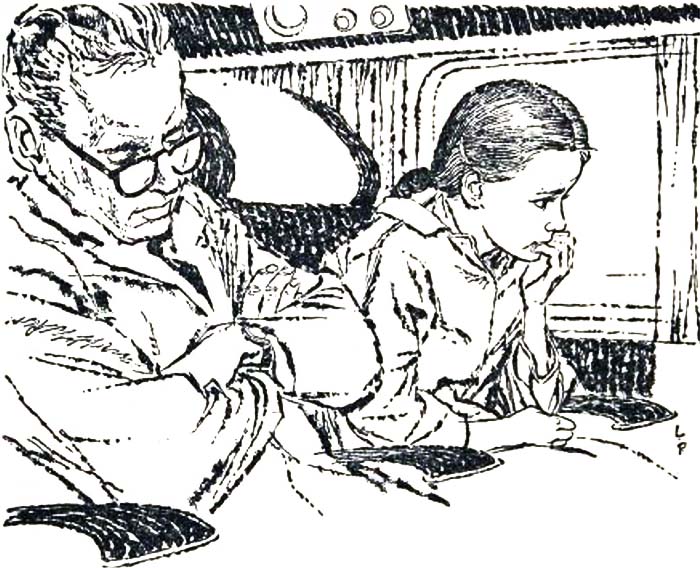
If we focus entirely on Sal, the emotional arc doesn’t redeem itself, either. That is, Sal is accepted by the abled majority only to the extent she can help someone else, namely her “moody” friend, stay happy (crippledscholar.com). As with the other novels we’ve discussed, the well-being of the abled community is paramount. If a disabled person has to be physically or in this case emotionally sacrificed, so be it. It’s better if, like Sal, the disabled person doesn’t realize how they’re being sacrificed, or agrees to it as Sal does with Elsje. One could argue Jean Little was simply trying to impart lessons about friendship, namely that children with disabilities can have friends too and facilitate their happiness in non-inspirational ways. Yet as Crippled Scholar puts it, these lessons cross into “smarmy morality” and make Sal secondary in her own story. Sal lives and thrives physically and emotionally, and yet, in some form, it feels as if her author killed her.
Roll With It
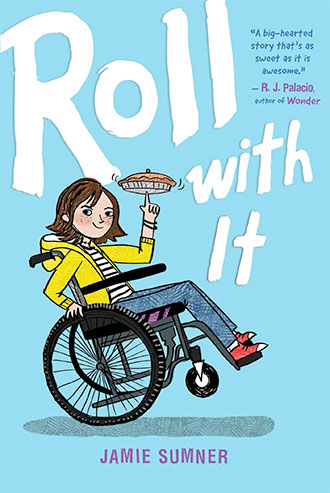
Published in 2019, Jamie Sumner’s middle grade (MG) novel is one of several coming out of the recent move toward representation and inclusion. Its protagonist is Ellie, another girl with cerebral palsy. Ellie’s cerebral palsy is better drawn than Shawn McDaniel’s or Sal Copeland’s though, because of its context and crafting. That is, it makes sense for Ellie to have CP because of how common we now know the condition is. The CDC calls it the most common motor disability in children (a bit of a misnomer since CP is lifelong). Additionally, Ellie is presented as living in the majority-abled world; she has never been in an institution, group or care home, or school for disabilities like Sal Copeland’s Allendale. The context of Roll With It communicates, for better or worse, disabled people are expected to live in the world.
Disabled and Dynamic
In addition, the crafting of Ellie’s CP is more realistic than Shawn or Sal’s. Ellie is not completely incapacitated or a “secret genius” like Shawn. She uses a wheelchair, but unlike Sal, Ellie isn’t questioned or shamed when she brings up, “This wheelchair makes me different, and I don’t always like it.” Like Sal or Shawn, Ellie gets babied, but the babying is more a product of environments she encounters. For instance, she notes that she hates going to the pediatrician because at her age, she feels too old, and because the waiting room TV is always tuned to Paw Patrol. She tells us her wheelchair has designs and colors, but they are geared toward a much younger girl because those are what the hospital and rehabilitation center have on hand. And when Mom or Mema ask why Ellie no longer enjoys a juvenile show or activity that she once did, Ellie is quick to point out, “I’m twelve.”
Ellie has a developing gift for baking, but is not a genius at it. She learns and embraces her gift at the pace most non-disabled kids probably would. She accepts cerebral palsy as part of her life, but realistically complains about say, needing help in and out of her grandma’s bathtub/shower because there are no accessibility accoutrements. She struggles to communicate, but less like Shawn and more in the way most middle-grade kids struggle, because the adults in their lives already think they know what’s best. And while Ellie longs for more agency, she doesn’t long for independence in quite the way Sal does. That is, Ellie is not set up to think independence is an ultimate goal, her reason for being. Rather, she embraces independence as she finds it, such as through creating and maintaining a mixed-ability friendship circle.

Still, like almost any character, Ellie is vulnerable to emotional death. That emotional death is tied to her cerebral palsy, but in a different way than we’ve seen so far. When Ellie’s grandpa begins struggling with dementia, Mom decides she and Ellie need to move in with Grandpa and Mema to help out, despite Mema’s objections. In one way, this is good for Ellie, who’s under the control of a hovering aide at school and isn’t allowed to move about or socialize the way her peers do. But in another way, moving means Ellie could have fewer opportunities than she already does. Grandpa and Mema live in a trailer park in rural Oklahoma, where all the kids have known each other since kindergarten and disability services are unheard of. Ellie may not get what she needs in terms of CP, and she may languish as social and acceptance needs continue unmet.
Navigation of the Inter-Abled World
Refreshingly, Ellie does better in Oklahoma than she or readers expect. At first, she’s taken aback at her new school, which is one story with one classroom for each grade. On the other hand, this means a full-time aide isn’t practical; Ellie’s able to convince Mom a classmate can help her get around when needed. She’s a bit leery of the kids she encounters most often, Coralee, a neighbor who lives with her grandparents and about a dozen cockatoos, and Bert, the grocer’s son who seems awkward and geeky. However, Coralee is the first typical peer who has offered Ellie friendship instead of pity, and the girls forge an authentic bond. As for Bert, it’s never outright stated he’s autistic, but he exhibits a lot of spectrum traits and is interacted with accordingly.
Coralee, Bert, and some other casual friends and neighbors make up the first inter-abled friend group Ellie has ever had. Coralee and Bert help her when the situation calls for it, but mostly, they hang out as typical middle school friends. And while there is a key moment when Coralee realizes she treated Ellie with casual ableism, Ellie does not exist to educate Coralee or other abled peers.

Ellie struggles off and on with the concept of social death throughout the novel, especially when Coralee makes an ableist comment or two and seemingly abandons her when she has a seizure. But Ellie’s biggest struggles with emotional death are actually tied to her talents and positive traits. For instance, Ellie often bakes new treats for her family, but they don’t appreciate said treats. In some cases, like with linzer cookies, Ellie’s family complains they don’t know what the goods are supposed to be. But even when Ellie makes something her family and friends are more familiar with, they don’t seem enthused. Additionally, Ellie wonders why Mom and Mema trust her to bake alone in her kitchen, but continually insist she needs services like a school aide, near-constant therapy, and more help at home than she actually wants. Unlike some other disabled characters, Ellie doesn’t conclude these struggles mean she’s not a good baker or that her talents don’t matter. Yet she battles insecurities over whether her baking will improve, or how much other people will want to be in her life if almost everything she does requires outside help.
As Roll With It continues, readers find out Ellie is a highly empathetic person. Better, she expresses real empathy rather than an over-the-top version like Pollyanna. Ellie’s empathy and compassion are allowed to mix with other emotions like anger, such as when she gets upset about how Mom and Mema react to Grandpa’s dementia. “So that’s it?” she asks once when Grandpa has an episode at church. “He does a few things that inconvenience people, and we ship him off [to a nursing home]?” Ellie’s questions might seem impractical; nursing facilities and Social Services exist to offer extra help to people like Grandpa. But in questioning, Ellie hits on the story’s theme of how disabled people are treated. Yes, we have traditional means, she implies. But are those traditional means and methods always best? Do they give negative messages to the people who need help? Are they, in fact, contributing to emotional death?
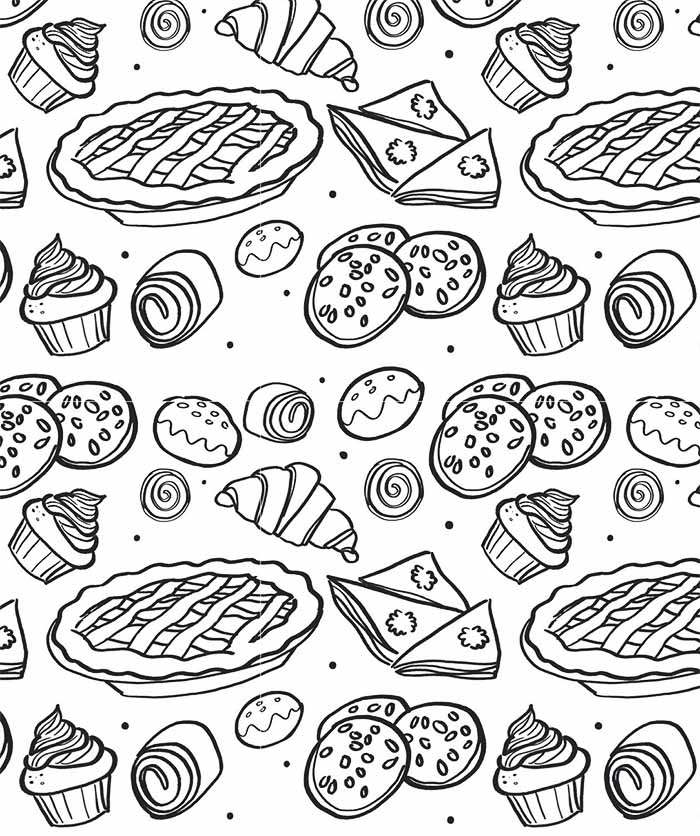
“You’re Disabled? Please Go Away.”
For Ellie, the answer to the last question is “yes.” She begs Mom and Mema not to consider nursing homes, particularly the local one, as options. She has seen the local place, and it’s stereotypically depressing. In addition, Ellie connects nursing homes and Grandpa’s situation with her own situation. In one crucial scene, she comes home to find nursing home brochures all over the living room, and breaks down. At first Ellie is upset about Grandpa, but the reveals her real feelings to Mom–“Is that what you’re gonna do with me? Are you gonna send me to a home, too?”
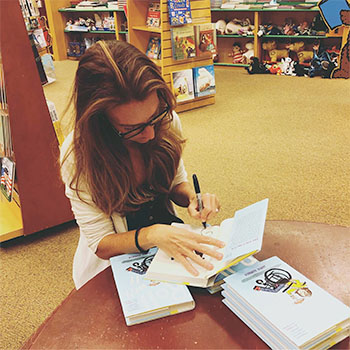
Mom reassures Ellie she will never be sent to a home; her “home” is with family and someday, with people she chooses, like roommates. But the emotional death tied to being “sent away” remains present throughout Roll With It, as Ellie reflects on the “home” concept and how she has already been “sent away” in her life. For instance, Ellie’s dad has never been around, and only calls once during the book, at Christmas. Ellie doesn’t know for sure her CP is the reason for Dad’s abandonment, but it’s heavily implied. Considering how others have treated her, Ellie concludes of course, most people want to distance themselves from persons with disabilities if, and as much as, possible. When Bert and Coralee seemingly abandon Ellie in the hospital after a bad seizure and pneumonia, Ellie feels “sent away” or “put away” again. She sees the constant use of therapists and aides as another form of “putting away,” as in, “The regular way of doing things doesn’t work for you. Thus, we, the abled people who know best, will send you to a different area, with an ‘expert’ person who is trained to deal with you, so that we can go about our regular business.”
Readers can and do make the argument that no one means to send Ellie away and thus cause emotional death. Again, many of the ways disability is handled in the mainstream world have been inherent in the system for decades. Since around the 1960s, the civil rights movement for PWDs has gained steam, and there has been a move away from institutionalization. As Ellie and Grandpa show us though, facilities with labels like “group home” or “nursing center” are becoming the new institutions. Buzzwords like “special needs” are becoming the new form of “retarded,” and “handicapable” or “challenged” are becoming euphemisms people use because the concept of disability makes them uncomfortable. Jamie Sumner’s novel then, walks a fine line between showing the reality of emotional death by segregation, and promoting some form of segregation for those who are judged to need it, like Grandpa.
Institutionalization Within the Disability Narrative
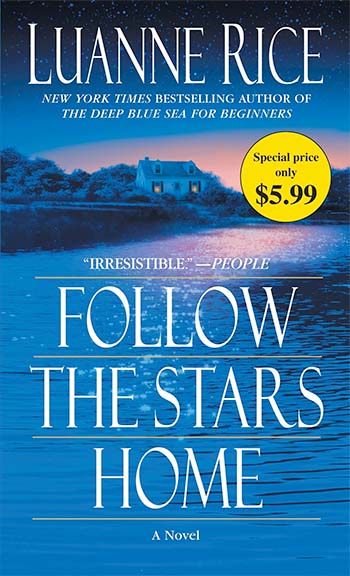
Jamie Sumner is not the first author to walk this line. The fear of being sent away or placed in a “home” is extremely common for today’s disabled protagonists. This is particularly true for those with visible disabilities or forms thereof, such as cerebral palsy, autism, or Down Syndrome. Ten-year-old Melody Brooks tells us a doctor recommended institutionalization to her parents while she was in the room during her story, Out of My Mind. Moose, the abled protagonist of Ginnifer Choldenko’s Al Capone Does My Shirts, notes his family moved because his autistic sister Natalie needed to attend a “special school” in the new area. Had they not moved, she’d have been sent away. In Luanne Rice’s Follow the Stars Home, several people, including her own dad, suggest disabled character Julia should live in a group home or hospice because she is ill, cannot walk, and cannot speak. Whether or not the characters themselves express fear of institutionalization, it remains in the background of many disability experience stories. In a way, it’s almost too easy of a target.
Because institutionalization plays a big role in the disability narrative, authors should be careful how they present it. That is, if institutionalization is a disabled character’s only fear, that character runs the risk of becoming a caricature. He or she also sends the message that because institutionalization is still an option, it’s inherently better than living in “the real world.” Characters with disabilities need other fears, concerns, and arcs. Some of the best examples can tie in to institutionalization, as with Ellie and her grandparents (Mema and Grandpa end up considering a senior community together). Others can have institutionalization on the back burner, such as with Melody in Out of My Mind. Or like Sal Copeland, the CWD can be coming out of a disabled-only setting and acclimating, without fear of getting sent back. No matter what path an author chooses, this type of emotional death is good, but probably shouldn’t be a first resort for conflict.
Wonder

First published in 2012, R.J. Palacio’s middle-grade novel Wonder was an instant hit. Almost a decade later, it’s still a bestseller. The book has spawned several short stories, a well-loved film, and movements toward inclusiveness and kindness in real-life classrooms. Classroom activities include not only the standard novel study unit, but also activities and projects based on interdisciplinary and social lessons. Like the other characters in our discussion, Wonder’s main character Auggie faces, and in some ways experiences, emotional death. But Auggie’s experience is markedly different from any of our other characters’. He may be the best example of how an author can put a disabled character at risk of death, without implying that character is less than worthy of any kind of life.
Familiar and Unfamiliar Conflicts
August (Auggie) Pullman’s story starts out the way readers probably expect a disabled character’s story to start. Auggie tells us he has craniofacial deformities, but doesn’t describe them (“Whatever you’re thinking, it’s probably worse”). He also describes the disabilities inherent in his condition, such as struggles with eating and drinking, plus visual and hearing problems. Auggie goes on to say he’s been homeschooled all his life because teasing and bullying is inevitable. This year though, he’s starting fifth grade and his parents–a hopeful Dad and reluctant Mom–are sending him to Beecher Prep so he can learn what the world outside home is like. The familiar setup immediately falls into place, as do the familiar questions. Will Auggie face ableism, or rather, how much, and how will it affect him? Will he succeed in “regular” school by any definition? Will he make friends? As with our other characters, the assumption is that if any of these questions receive negative answers, Auggie will undergo emotional death.
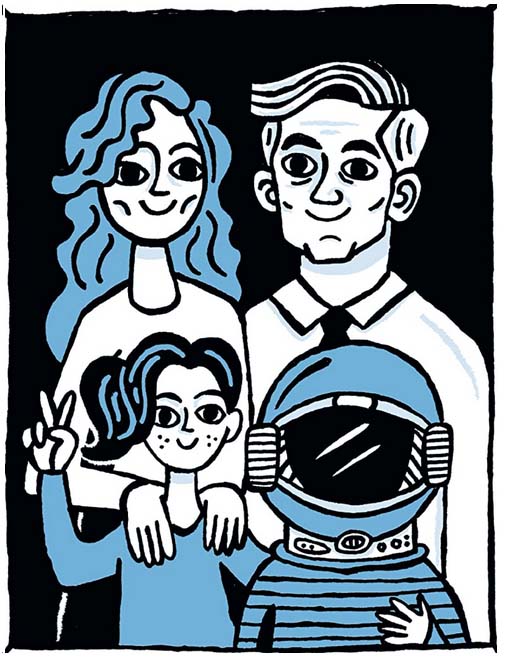
As with our other characters, emotional death seems inevitable at first. Auggie’s first acquaintance at Beecher Prep is Jack Will (looks like two first names, but “Will” is his last name, he explains). Jack’s assigned to be Auggie’s buddy and show him around school, but otherwise acts uncomfortable around him. Auggie has another buddy, Summer, but finds her a bit chatty for his taste and, after all, a girl. Plus, a popular boy named Julian and his “gang” of hangers-on like Miles and Henry, dislike Auggie on sight. All the usual elements for a disabled character’s conflicts with a majority-abled environment exist, and sometimes they are handled in familiar ways. That is, Auggie has set readers up to expect some ableism or pity, so if we didn’t see it, we would wonder what Auggie was so anxious about.

However, Auggie’s attitude toward these conflicts, plus the other conflicts of Wonder as a whole, are new and unique. For instance, Auggie doesn’t like being made fun of. But rather than let ableism sour his entire school experience, or reacting in an overly positive way, Auggie reacts like any other kid. He acknowledges the ableism, but also acknowledges Julian and his gang’s attitudes should change because Auggie’s face is part of who he is. Auggie also acknowledges Julian makes fun of him for other reasons, like his love of Star Wars and particular character Boba Fett. But again, Auggie’s attitude conveys, “This is who I am, and if others don’t like it, that’s okay. I’ll keep doing my own thing.” It helps that Jack is a fellow Star Wars fan, and that Auggie can build a friendship from that and other common interests. Additionally, it helps that in staying away from Julian and the popular boys, Auggie can more quickly determine who might be on his side, who might be safe to start building friendships with. This opens him up to more diverse friendships than he’s encountered before, such as with Summer.
The novel’s lack of focus on ableism, plus Auggie’s response when it does come up, makes Wonder more an inclusion story than a specific disability inclusion story. As Wonder continues, Auggie’s craniofacial deformities become more accepted as a matter of course. They’re not played up, but they don’t disappear, either. They become more like a minority skin color or religion or orientation in Auggie’s friend group. They are a fact, an interesting facet, not a reason to drop everything the friend group is doing and interact with disability (see Mine for Keeps and Roll With It in contrast). Additionally, Auggie’s acceptance into a small but mixed-ability friend group gives him another advantage over some of our other protagonists. Auggie is not the center of every interaction with Jack, Summer, and others, such as Miles (who is on the outer fringe of Julian’s group and can sometimes be cordial). Nor does Auggie’s role involve keeping a “leader friend” happy, or staying in the background until his friends need an inspiration. Auggie has a few close friends, and they all fill each other’s emotional and social needs on equal footing. Auggie is allowed to act and react as a middle school kid with friends, not a disabled middle school kid who can either be center of attention or an inspirational outcast.
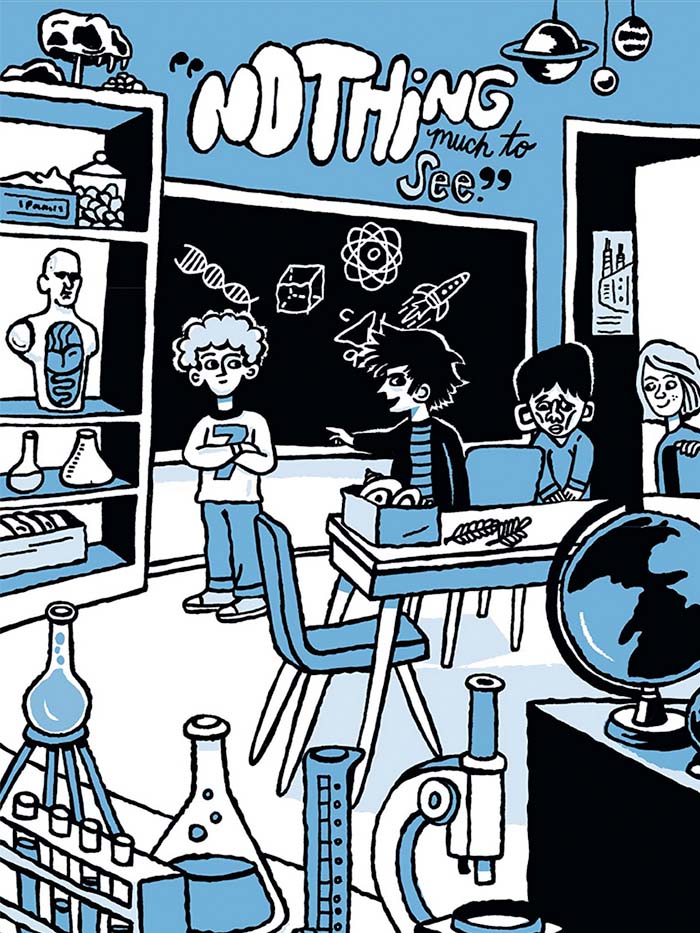
Nuanced Encounters with Bullying
A huge theme in Wonder is “Choose kind,” as seen in the book’s tagline and most of the curriculum materials found in classrooms. Therefore, it makes sense that the book has to deal with what happens when people don’t choose kind, at least some of the time. Auggie does encounter ableism and bullying, and it does cause a partial emotional death. What’s unique about Wonder though, is how the ableism morphs, how Auggie and allies handle it–or don’t–and how the bullies are affected.
Often, when a character with a disability encounters ableism, it’s a clear-cut incident or series of incidents. Every time the character receives negative treatment, we know it’s because of disability. With Auggie, this isn’t necessarily the case. Julian and his gang do start out bullying Auggie because of his face. But as Auggie refuses to capitulate and act like a victim, and more kids get pulled in, the bullying morphs. The boys in Auggie’s class engage in a “boy war,” where they are forced to take sides. Julian implies to take Auggie’s side is to subject oneself to social and emotional death; Auggie’s allies will be ostracized and treated as freaks, just like he is. Meanwhile, the girls mostly recuse themselves. However, a couple, such as Summer and Charlotte, make quiet alliances with Auggie and risk more subtle ostracism. The girls aren’t directly involved in the “war,” but they know their choices say something about the bystander dynamic.

Within the “boy war,” readers see a lot of uncommon dynamics. Julian is the clear leader, with the power of a “gang” behind him. However, rather than having several loyal followers, Julian has vacillating ones. Henry and Miles tend to go along with whatever Julian does, but both are capable of treating Auggie kindly or admitting he’s not as freakish as Julian thinks. Similarly, Jack starts out as Auggie’s ally, but then succumbs to peer pressure, making mean and ableist comments about him on Halloween. Thus, both Julian and Auggie assume Jack has permanently “switched sides.” The problem is, Jack quickly experiences remorse, going so far as to ask himself what he was thinking. His remorse and friendship with Auggie are cemented when Julian turns the focus of the boy war to Jack.
During this time, the bullying still has an ableist component. For instance, the other boys start playing a game where touching Auggie or being near him is called getting The Plague. But there’s also a more general element to the bullying. It reads as more, “You’re disabled and I don’t like you or anybody else who likes you.” It’s less about the more common manifestation, which is, “You’re disabled, so no matter what, I don’t like you.”
The bullying, particularly Julian’s part in it, takes on more nuances as the story reaches its climax. Julian’s mother photoshops Auggie out of the class yearbook picture, devastating Auggie and angering his friends. When the principal confronts both Julian and his mother with what’s been happening, Mom goes even further, blaming Auggie for Julian’s bullying. She claims Auggie’s face is giving Julian nightmares and causing other trauma, and that Auggie should be removed from Julian’s purview. Similarly, Julian denies any responsibility, either as a bully or as a fellow classmate who should’ve treated Auggie like a human being. It’s a gut punch to Auggie, who now feels his differences define him and he can never have a real place in his world. The film drives this knife in further, with Auggie crying and asking his mom if his looks ever won’t matter. The knife gets twisted when the principal, Mr. Tushman, doesn’t confront Julian’s behavior directly or punish him harshly.
Auggie doesn’t stay devastated or an outcast, but he doesn’t become everyone’s favorite person, either. Instead, he, Jack, and Summer solidify their friendship and alliance against Julian. Auggie accepts that though Julian seemed to get off the hook, Mr. Tushman and other adults will keep a detached, but watchful eye on the situation. After some trepidation, he agrees to attend the annual campout for Beecher Prep’s oldest students. Yet he remains a target; another bullying incident occurs with a bigger, older kid named Eddie, who calls Auggie “retarded” and tries to beat him up.
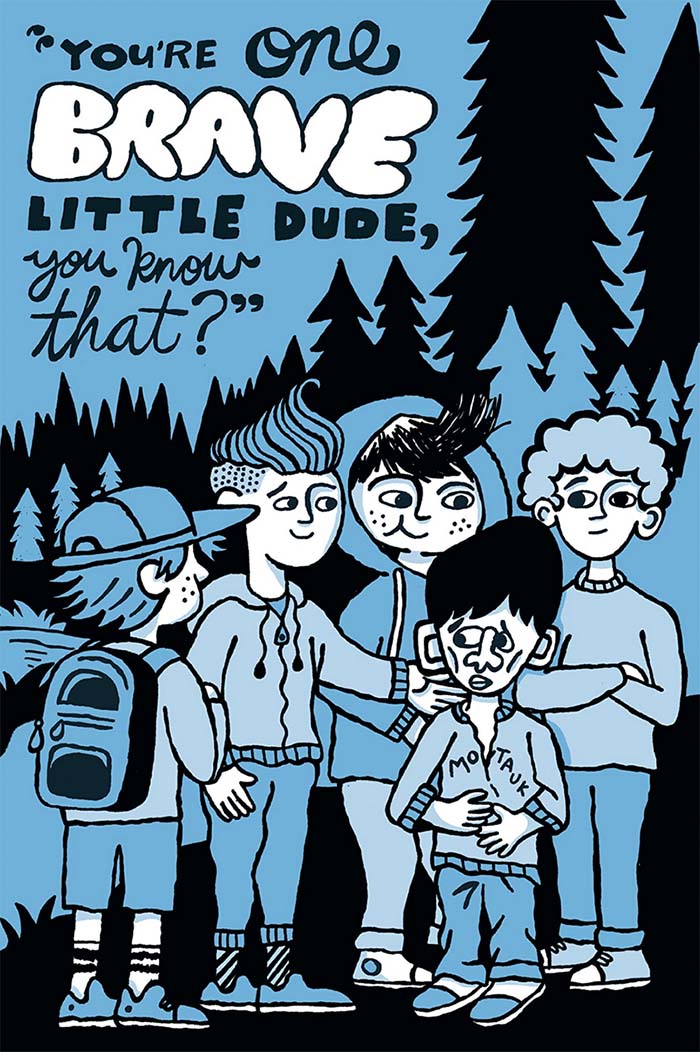
Jack, Summer, and Charlotte come to Auggie’s aid. Interestingly, so do Miles, Henry, and Amos, all members of Julian’s gang. All the kids don’t become best friends, but Julian’s former “foot soldiers” come away with a three-dimensional understanding that Auggie is human. Eddie is expelled, and although readers don’t hear from Julian again in Wonder, there is evidence that his story isn’t over. R.J. Palacio cements this evidence, and sates readers’ curiosity, in short story The Julian Chapter. Even there, Julian doesn’t gain total reader sympathy or become a perfect angel. However, he does own up to his role in the partial emotional death of a classmate, and explores several incidents that have led to his own emotional stunting.
Death by Absence
Sometimes, characters with disabilities don’t or can’t die in a certain story or genre, because they simply aren’t there. In recent years, readers, viewers, and creators have noticed whole genres leave out disability entirely, or mention it in passing but fail to develop disabled characters in any way. One could argue this is a good alternative to setting up disabled characters for death, even the social and emotional kind. However, because death by absence usually occurs across a whole genre, this reads less like an alternative and more like a perverse wish fulfillment on the part of creators.
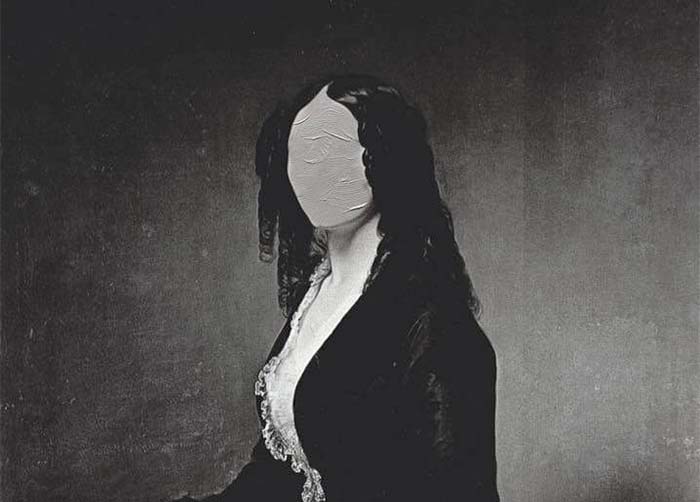
Fantasy
Harry Potter’s seven-book fantasy saga took the world by storm in 1997, and fans still can’t get enough. Since the advent of social media, entire sites and threads dedicated to the boy wizard and his cohorts hum with new content daily. But not everyone flocks to Harry Potter sites and activities because they’re fans, either of Harry or his author, J.K. Rowling. Plenty of fans take to social media, blogs, or other outlets to complain about areas where the saga has failed.
One such area, perhaps the biggest, is in representation of minorities. Years after the end of the Harry Potter films, fans are still incensed that the originally Black Lavender Brown was replaced with a white actress mid-series. J.K. Rowling was “cancelled” in 2020 after she stated in a social media thread that transgender women are not women. And Katie Leung herself has spoken out about the negative treatment she, and her character Cho Chang, received as the franchise’s only named Asian character/actress. Considering these examples, the lack of disabled wizards and witches seems almost negligible. But it’s actually the presence of these other failures that mean we must discuss the lack of disability inclusion.
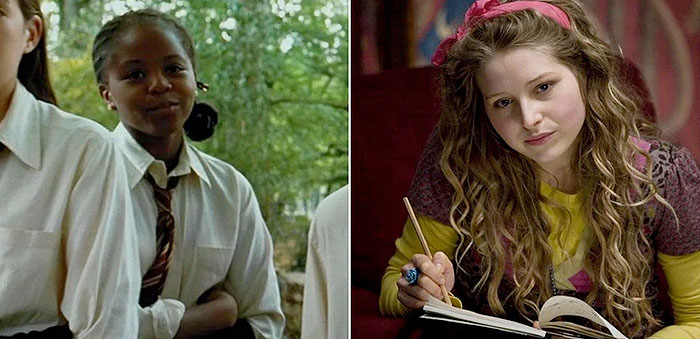
From Harry Potter’s outset, it seems Hogwarts and the surrounding world has little room for people with disabilities. Readers and viewers have gone so far as to question Harry’s ever-present spectacles–why does a magic wizard need glasses? This attitude toward an accommodation that can be used without the presence of a “larger” disability like legal blindness, leaves little room for “actual” disabilities. For instance, we never see a physically disabled athlete on the Quidditch field. If a player does sustain injuries, they’re cured fairly quickly, and much more quickly than in the non-magical world (see Harry’s experience with the bone-repairing SkeleGro). Evidence that Ron Weasley might have a learning disability, such as writing his name as “Roonil Wazlib,” is played for laughs. Chronic illness almost can’t exist because of potions and spells that work instantly against sickness. As for intellectual disability, in the Wizarding World, the very idea seems laughable. After all, if real-life students with intellectual disabilities are sent to “special education,” what would they be doing in a “mainstream” wizarding school?
J.K. Rowling does have a few characters with actual disabilities, or conditions coded as such. Alastor “Mad-Eye” Moody, for instance, is a veteran of the First Wizarding War, wherein he lost the eponymous eye (his false one tends to dart back and forth in response to his emotions). Remus Lupin is a werewolf, and Rowling has stated his lycanthropy is a stand-in for HIV/AIDS, which qualifies as a chronic illness. And some characters, such as Luna Lovegood, Hermione Granger, and even Professor Snape, have been read as autistic or Aspies (having Asperger’s syndrome, which is usually considered separate from classical autism).
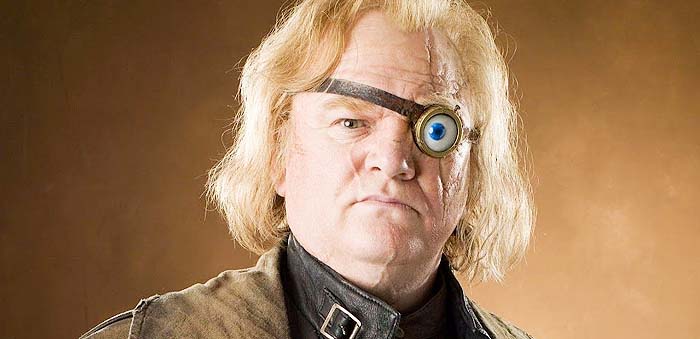
However, there’s not much evidence if any that Rowling meant any of these characters as disability representation. They fall more into the “happen to have” or “defined by disability” traps. For instance yes, Moody is physically disabled, but no one ever talks about his disability in terms of affecting his life. He reads more as a war veteran who “doesn’t let disability stop him,” a characterization real disabled people dislike because in reality, having a disability means you are sometimes stopped from doing what you want. Similarly, Lupin is “disabled” because of lycanthropy, but he’s not given accommodations, except wolfsbane potion from a reluctant Snape. Lupin isn’t treated as a valuable disabled character; he’s treated as a dangerous person who must be kept a secret, like Colin Craven. When Lupin loses his job because of lycanthropy, he never gets another, and except for his own family, is still looked down on. In fact, he dies in the Second Wizarding War impoverished and largely forgotten, because others were “bigger” heroes. As for “coded” characters like Hermione or Luna, they don’t have named disabilities, so readers can and do choose to see them as abled.

Unfortunately, Harry Potter is not the only fantasy franchise whose characters lack ability levels, or whose authors ignore disability. Disability is completely absent in other classics as well, such as The Chronicles of Narnia and Lord of the Rings. And although disability is more common in today’s fantasy, readers are more likely to encounter characters who are “coded” disabled than actually named as such. At times, readers will encounter a protagonist whose disability is part of a major arc in one book, but is rarely important during the rest of the series. For instance, Harper, protagonist of the Beauty and the Beast retelling A Curse So Dark and Lonely, has cerebral palsy and deals with it during her first book. But in the subsequent two novels, cerebral palsy is not a vital part of the plot. Additionally, readers may also encounter a character who has a disability, but is not diverse in any other way (race, gender, religion, and so on). Or, readers may encounter several different versions of the same disability in fantasy. Right now for example, neurodivergence and other “invisible” disabilities are more common than physical or “visible” intellectual ones.
The common rationale for this lack of disability, or diversity of disability, is magic. Magic, by definition, imbues its users with the power to possess or erase anything they want. It may have parameters; Harry Potter and friends are forbidden from using the Dark Arts, for instance. It may also have specific rules; Harry learns Transfiguration, but Professor McGonagall explains that because of governing scientific laws, he can’t do things like conjure food. But overall, magic is meant to preserve the desirable and erase or mitigate the undesirable. The message then, becomes that disabilities–and the people with them–are undesirable and cannot fit into a magic world.
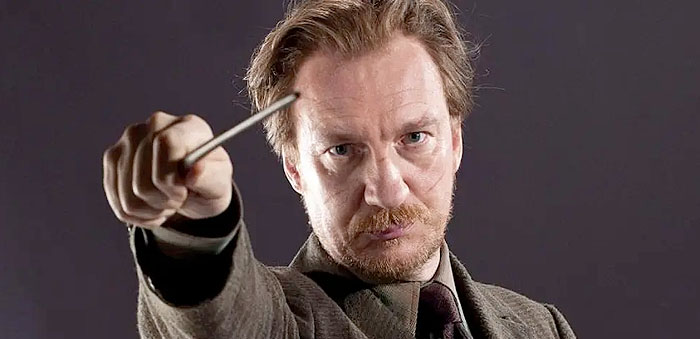
Sometimes, a character in a fantasy world can retain disability, but only in negative circumstances. That is, Mad-Eye Moody retains disability only in the sense that he is a war veteran. His loss of ability is tied to the tragedy of combat. Lupin retains disability only because–again, tragically–there is no cure for lycanthropy, and it is better to leave the matter alone than to try providing accommodations. Other characters in other universes experience this, too. If they have disabilities, or something coded as a disability, they’re considered “cursed.” This could be an actual curse, such as a witch or evil queen stealing someone’s ability to speak or walk. It could also be a case of congenital powers or weaknesses being stigmatized, as with Queen Elsa of Frozen. Elsa’s parents make the distinction that she was born, not cursed, with ice powers. Yet they treat her as if she’s cursed, isolating her from the kingdom and forbidding her to express her powers. As an adult, Elsa cries out, “I can’t control the curse!”
Physically cursed or implied to be then, it seems fantasy only has room for disabilities as negative. They are either tragedies or, in cases like Lupin or Elsa’s, dangers that hurt “normal” people. Disabilities are rarely if ever celebrated in the fantasy genre, so again, it seems easier to ignore them. Thus, readers with disabilities end up erased from entire worlds–ones which are otherwise full of possibilities for anyone but them.
Dystopia
If there were any genre where it might make sense to ignore disability, dystopia is it. Dystopia, or “an imagined state or society where there is great suffering and injustice, typically…totalitarian or post-apocalyptic,” has little room for diversity of any kind. If anything, “different” may be outlawed or at least frowned on. Many dystopian societies, such as Orwell’s society in 1984, have worldviews that mean differences are unequal or dangerous. Others, such as Panem of The Hunger Games, embrace “survival of the fittest”–which by definition, people with disabilities are not. However, conventions or not, is it ableist to leave disabled people out of dystopian universes? Again, the idea has merit, as fiction is supposed to be a place where all things, done by all people, are possible according to the whims of authors.

Yet so far, the whims of authors have not included characters with life-affecting disabilities, who retain them without fear, use them against a dystopian regime, or otherwise thrive with them in dystopia. In The Hunger Games, for instance, every citizen of Panem must participate in The Reaping; diversity of any kind, from race to disability, is implied irrelevant. But Katniss Everdeen notes that disabled competitors, such as a “childlike” boy who was selected for the games not long ago, are among the first to die. Katniss herself has hearing loss in one ear, but she sustains it as part of the Games. She doesn’t go in with a disability, and she doesn’t use the hearing loss to her advantage once she has it. If anything, author Suzanne Collins spends more time on how her partial deafness disadvantages Katniss in the rest of the games. This is realistic, and Collins gets Katniss through her series without special treatment or inspiration porn. Still, the deafness is barely mentioned in the books or films, which leaves disabled fans wondering again, why was this included at all?
At times, authors “cut out the middleman” and go for the unspoken solution for dystopian citizens with disabilities. Despite authors’ efforts to move away from the “just go and die” narrative, the death of disabled people is still seen as a mercy more in dystopia than any other genre. Lois Lowry’s The Giver, for instance, may have started this trend. Granted, euthanasia, or Release, is the expected end for everyone in The Giver’s society, and although we do see a baby euthanized, it’s because of low birth weight, not disability. At the same time, most people who get Released are elderly–therefore infirm, therefore assumed to sustain some type of age-related disability. And when protagonist Jonas’ foster brother Gabe shows signs of abnormal behavior, he’s scheduled for Release. Lowry doesn’t name the disability outright, but baby Gabe is implied to be on the autism spectrum. Jonas does escape the dystopia with Gabe, but Lowry leaves their lives or deaths completely open-ended. Thus, it’s not out of line to assume Jonas and Gabe died, and that Gabe was yet another casualty of the “disability = death” narrative.
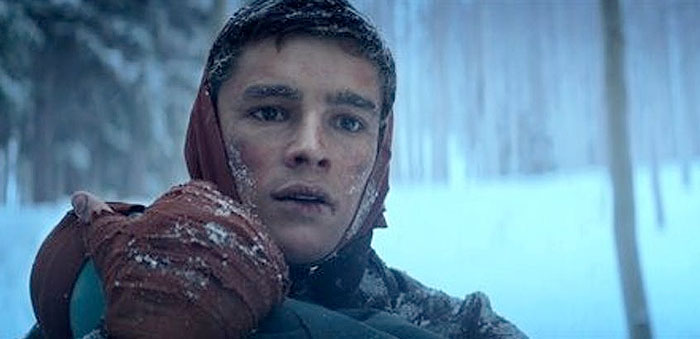
What’s most disturbing about today’s dystopia, though, is not that disabled people are automatically euthanized or presumed less useful. More often than not lately, the disturbing part of disability in dystopia is, it’s simply not there. In The Hunger Games, the only disabled people are the mute Avoxes, who have their tongues cut out for speaking against the capital, become slaves, and are then ignored. In Divergent, disabled people are never seen; at best, they are implied to be factionless and homeless, left at the side of the road (Duyvis). Margaret Atwood’s The Handmaid’s Tale discards disability right away; “babies born with disabilities are called ‘unbabies,'” and put away quickly…somewhere (The Geeky Gimp Riots). The message for disabled people in dystopia then, is actually worse than “go and die.” This message is, “Dead or alive, you do not belong. Dead is better, but even your death is taboo, so it’s better you don’t exist in this world.”
Understanding Disability and Death
When it comes to characters with disabilities, death may never go away. One could argue that because all characters, disabled or not, are faced with some form of death, CWDs should be, too. To protect them too much, or deny physical and emotional death, would be another form of ableism or inspiration porn.
Yet, this doesn’t mean the union between disability and death has always been peaceful, nor should it be. If characters with disabilities are set up to die just because they are disabled, or set up to die without a chance to fight, that’s not a good union. Instead, it’s erasure. So too is it erasure if a disabled character faces social or emotional death, but is only “saved” because of their inspiration factor or ability to make abled people’s lives better or happier. And considering that some genres barely acknowledge disability, if at all, disabled people seem erased from whole worlds. This doesn’t bode well for the real world.
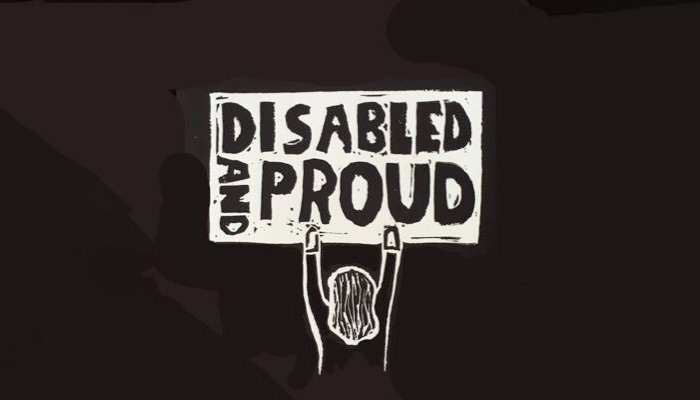
How then, should authors and other creators approach disability and death? Are creators doomed to treat disability and death as inextricable? The answer is no, but only if we stop focusing on disability. That is, disabled people are first people. Their disability is as much a part of diversity as is race, religion, orientation, age, or national origin. Thus, they face death like all of us–and they deserve life like all of us. Disabled people will die because we all will, and they too should have a chance to fight death, to overcome it, and face it with dignity, when their time actually arrives. But until a disabled person’s real, appointed time to die, he or she can and should have a journey filled with life.
Works Cited
“A Complete Breakdown of the J.K. Rowling Gender Comments Controversy.” Retrieved from www.glamour.com on December 13, 2021.
“Advocates Protest Disability Snuff Film ‘Me Before You.'” Retrieved from www.respectability.org on December 13, 2021.
“The Boiling Point: Disability in ‘The Handmaid’s Tale.'” Retrieved from www.geekygimp.com on December 13, 2021.
Burnett, Frances H. The Secret Garden. Delhi Open Books, 1st Edition. October 5, 2020.
Dickens, Charles. A Christmas Carol. Digireads Publishing Illustrated Edition. December 14, 2015.
“Disability Rights Advocates Protest ‘Me Before You’ Film.” Retrieved from www.13wham.com/news on December 13, 2021.
Duyvis, Corrine. “Fiction, Like Life, Tells Disabled People Their Lives Have Less Value.” The Guardian. March 14, 2016. Retrieved from www.theguardian.com on December 13, 2021.
“Harry Potter’s Katie Leung Recalls Racist Bullying Over Cho Chang Casting: ‘I Just Broke Down.'” Retrieved from www.people.com on December 13, 2021.
Heward, William et. al. Exceptional Children: An Introduction to Special Education 11th Edition. Pearson: 2018.
Holmes, Sarah Catherine. “Leftist Literature and the Ideology of Eugenics During the American Depression.” Retrieved from www.digitalcommons.uri.edu/dissertations on December 13, 2021.
“John Steinbeck Biographical.” Retrieved from www.nobelprize.org Ddecember 13, 2021.
Keith, Lois. “What Writers Did Next: Disability, Illness, and Cure in Books in the Second Half of the 20th Century.” Disability Studies Quarterly Winter 2004, Volume 24, No. 1.
Keyes, Daniel. Flowers for Algernon. Independently Published. September 13, 2021.
Lawrence, Clare. “Is Lennie a Monster? A Reconsideration of Steinbeck’s ‘Of Mice and Men’ in a 21st Century Inclusive Classroom.” Retrieved from www.nature.com on December 13, 2021.
Little, Jean. Mine for Keeps. Little Brown and Co. Reprint Edition. April 1, 1988.
Moyes, JoJo. Me Before You. Penguin Books. December 31, 2012.
Palacio, R.J. Wonder. Knopf Books for Young Readers. February 14, 2012.
Porter, Eleanor H. Pollyanna. Independently Published, February 18, 2020.
“The Reawakening: 1950-1980.” Parallels in Time: A History of Developmental Disabilities. Retrieved from www.mn.gov/mnddc/parallels on December 13, 2021.
“Rereading My Childhood for my Dissertation: ‘Mine for Keeps.'” Retrieved from www.crippledscholar.com on December 13, 2021.
The Secret Garden BBC Miniseries (1975). DVD Release: June 16, 2014, Spirit Entertainment Limited.
Steinbeck, John. Of Mice and Men. Penguin Books: Reissue Edition. September 1, 1993.
Sumner, Jamie. Roll With It. Atheneum Books for Young Readers: Reprint Edition. October 1, 2019.
Trueman, Terry. Stuck in Neutral. HarperTeen Reprint Edition. July 24, 2012.
Whaley, Kayla. “Wheelchair Users in Fiction: Examining the Single Narrative.” Retrieved from www.disabilityinkidlit.com on December 13, 2021.
“Why the Role of Lavender Brown was Recast in ‘Harry Potter.'” Retrieved from www.looper.com on December 13, 2021.
Zhang, Sarah. “The Last Children of Down Syndrome.” The Atlantic, December 13, 2020.
What do you think? Leave a comment.











Have you watched The Elephant Man and Gattaca? Great films exploring suicide in characters with disability.
Thank you for speaking the doubts so many of us share. Part of the problem is how few disabled medics there are, given how medicalised disability can become. Perhaps we need a lobby action to get more medics to understand the social model of disability?
Without the “medical model” conditions would remain undiagnosed, spasms would go untreated, pain uncontrolled, breathing impossible etc etc. Both models are relevant and should work side by side.
I have seen a pure social model in action in many patients with Parkinson’s and other conditions. If untreated PD causes rapid and progressive disability, dependency and death. Treated, most suffers can have many many years with minimal symptoms and a social model is barely relevant until progression beyond the effect of medication takes its natural toll.
The social model of disability doesn’t argue for no treatment for medical conditions. The social model simply distinguishes between issues of impairment (illness or the bodily condition – some of which definitely need to be treated medically) and disability (the barriers to inclusion and full participation in society faced by people with impairments because of physical and social structures and attitudes). In my view it’s up to each disabled person to decide if they will use treatments to ameliorate their medical condition. Some may choose not to, some may not need to, and in some cases there is no helpful treatment anyway. What we do need, all of us disabled people, is an end to the high degree of discrimination and exclusion we face, in employment, leisure, social life, education, political participation.
I think Me Before YOu is similar to the film Titanic in its appeal for a specific female audience demographic , where the male romantic lead dies but through him (and his “sacrifice”) awakens the female lead to a much better future and self-realization. It is a particular female romantic fantasy (and to be clear, I certainly don’t mean all women, just a segment of them).
It wouldn’t be such a problem if there were more positive and realistic portrayals of disabled people in the media. Eastenders does a half decent job, I can hardly think of any others. That’s why it’s so frustrating, life for disabled people consistantly presented as not worth living. If it was one crappy movie in a sea of positive representation of course no one would care.
For a while, New Tricks had a really good disabled character, played by a disabled actress – in the series, she was Nicholas Lyndhurst’s daughter. And the most recent series of Stella featured a Down Syndrome character. So it’s getting better slowly, I think.
There’s also Clarissa in Silent Witness, also played by a disabled actress, who’s a brilliant character.
I would like to see representations of disability where they do not negatively affect disabled people in society.
I can totally understand your thesis.
Until the 1970s it was extremely common for gay characters in films to die by the end, often by suicide. Because of course that is the only proper outcome who chooses our “lifestyle”.
Anyone interested in that particular issue should watch The Celluloid Closet (from 1995 so slightly dated now, but very interesting).
The BBC still kill off their Lesbian characters – see Lip Service, Last Tango in Halifax and Call the Midwife (she didn’t die but she did lose her memory and move away).
They bring us in as a bit of “interest” and then kill us off right when we are finally achieving happiness, much like they do to disabled characters.
People are people, they aren’t their disability or their sexuality, that’s part of them yes but there are so many other aspects to them, just as the writer has said they live ,love, cry, fuck up, succeed, work, achieve, get angry and experience every other aspect of human life.
Have you seen the running list on Autostraddle of queer female identified characters who die?
I think it’s US only as it’s a US site but it’s absolutely chilling to see how common the trope you so rightly commented on still is.
Seeing that list as a straight disabled woman and reading the discourse actually made me more able to spot the similar patterns with disabled characters in popular culture, especially because there’s a big intersection of lesbian and bi women being disabled.
That intersection is one reason I read Autostraddle so much because while the rest of the media caters to my straightness, it’s the only one giving airtime to disabled people being people with disabilities rather than inspirations or identities or dire threats of what might happen to you if it all goes ‘wrong’.
This is why it’s important who tells the stories as well as who the characters are in them too.
An absolutely brilliant documentary – Lily Tomlin’s narration is so straightforward and strong and honest. Let’s hope similar strides can be made in the next 21 years for portrayals of disabled characters.
Non-disabled people apparently don’t know how to make a film about disability without it being uplifting and inspiring, but there are disabled people with flaws, just like the general public, and these are the stories that deserve more attention.
Excellent article, Stephanie. We’re written as burdens and as tragic characters that are literary devices used to provide inspiration to the able-bodied protagonist. It’s incredibly rare to read about a character who is disabled, where their disability isn’t also a major part of their plot. Disability in fiction is never incidental.
No, it isn’t. I struggle with this even as an “own voices” author trying to write three-dimensional disabled characters. That is, I don’t think disability can be incidental because it’s how we live. And should it be? After all, people of color have been treated as if their colors are incidental–when they totally are not.
Then again, I get what you mean, and again, there’s a struggle present. For instance, right now I am attempting to write a dystopian novel with a legally blind protagonist. She lives in the world that literally says, “death of disability is best,” and she fights back, tooth and nail. I want her to triumph over death. I want her to be able to give death the finger. But I’m also aware that, just her presence in a dystopian world, if not written correctly, is offensive b/c the majority says she should die.
When Marlee Matlin won her Oscar for her spellbinding performance in Children of a lesser God it seemed to me that disability would no longer be such a barrier in this fickle industry, now I am not so sure that it changed anything at all.
She was the last openly disabled actor to receive an Oscar. To get one, you usually have to play disabled.
Great article. I always find Shakespeare’s Richard 3 as a good exploration of a character with disability.
The notion that disabilities — a hunchback etc. — was a judgment from God upon the parents of the child is quite common in all literate societies.
For better or worse, Shakespeare wrote it as a play, not as a history, and Richard’s physical deformity is absolutely intended to show forth an inner moral deformity. Shakespeare could be subtle, but he started out with broad brushstrokes that nobody could miss. In The Merchant of Venice, it isn’t just a coincidence that Shylock is a Jew, who just happens to be a resentful money-lender. Shakespeare was making dramatic use of the crudest anti-Semitic stereotypes.
We can wonder how Shakespeare would have dealt with Richard if he hadn’t had the reputed deformity to work with; other arch villains, Iago or John the Bastard, could be seen as handsome enough. But given even a suggestion of a physical deformity, Shakespeare took it to the limit.
I love Shakespeare just this side of idolatry, but his Richard III is a blot on his escutcheon (as well as being historically inaccurate) – probably influenced by the politics of his time and his need for royal patronage.
Although the language is suitably ambiguous, Shakespeare immediately introduces Richard as a physically deformed person, with a chip on his shoulder about it:
‘Why, I, in this weak piping time of peace,
Have no delight to pass away the time,
Unless to spy my shadow in the sun
And descant on mine own deformity’
He declares that he cannot be attractive to the World, so he will devote himself instead to villainy; thus Shakespeare links Richard’s physical deformity (as Richard himself expresses it) to his inner, deliberate moral turpitude. Even allowing that Shakespeare was certainly grinding a political axe, this is a stroke of dramatic genius and fully supports the argument eloquently elaborated in the article above.
Have you read Steinbeck? He chooses to make characters with learning challenges central to his novels, Tortilla Flats and Canary Row: for example, a character that never quite manages to clean Doc’s surgery floor, always leaving the corners dirty, these are symptoms of somebody who has dyspraxia (affecting the planning of movements and co-ordination as a result of brain messages not being accurately transmitted to the body).
It seems to be easier to discuss disability in the past than in the present. I am waiting for writers to turn their attention to the new class of disabled. These are ‘normal’ people who become disabled as a result of an accumulation of chronic age-related diseases. It is widely acknowledged that longevity in itself is not necessarily a source of pleasure and, in my experience, many people thinking about later life are reluctant to face the possibility of increasing pain and the pointlessness of keeping people alive for the sake of it. Plenty of good material there!
Here in the UK, we celebrate the Queens birthday. And yet throughout her life she has depended on servants for her everyday needs. Is she a burden?
We aspire to be Hollywood celebrities, whose success is judged by the number of people they employ. Bodyguards, Cooks, Cleaners, Makeup Artists, Scriptwriters to write their speeches, Publicists to check every word they say and rephrase everythought.
We envy those who can buy the latest gadgets and equipment to make their life easier.
We wish we could go to an all-inclusive hotel to be waited on hand and foot from a chair we never move from on a beach to be handed drinks and food.
Yet if a disabled person needs some assistance from a part time carer or even in some cases some extra mechanical equipment, then they are considered a burden.
YES. There is *such* a double standard, and it makes me ill. Your comment also made me think, there’s a layer to the double standard that almost no one talks about. That is, we aspire to celebrities, buying the latest gadgets, etc., because our bias is that, “Well, those people worked hard to get to where they are.” Disabled people, on the other hand, are valued primarily based on if and how they can work, but then denied opportunities to do so. Many of us live as completely disenfranchised people. So when we need or request a gadget or assistive tech, or money to finance it, we’re seen as “lazy” and “taking the easy way out.” Therapies, IEPs, etc. are actually built around this, where tech devices or mobility devices are withheld from disabled people “so they won’t learn to take the easy way out.”
As Hermione would say, excuse me, I have to go and vomit.
A lot of bizarre assumption here.
The Queen hasn’t “depended on servants for her everyday needs” any more than any other very wealthy woman, and probably a good deal less than most. The Royal family are actually quite a practical bunch.
How many people really aspire to be Hollywood celebrities? No one I know.
I don’t know who regards a disabled person who needs some assistance/ equipment as a burden, you must know some very odd people.
You could call them odd, yes, LOL. The truth is, humans are just weird, regardless of ability level, race, creed, or any other distinguishing feature.
You are blessed not to know people who react to disability this way. Again, most people are not up front about it, because that’s not PC. But the overall attitude I’ve always gotten, for example, is, “Why do you need that” or, “I thought your disability was mild/you were smart.” (As if the need for assistance and intelligence are mutually exclusive). In school, I also got the attitude of, “If this technology breaks down, or if you don’t use it in the way we as abled people tell you that you should, you shouldn’t get to use it.”
Great insight, a genuine thank you for this comment – I had never thought of it in this way before.
As a disabled person my self I do all sorts of things that I did before mu=y body stopped working as it should. Those I know who are much worse than me do lots of stuff from frequent visits to loud rock and roll bands, motor sport, travel like the rest. There is a lot of ingenuity in people who find ways to overcome their bodies defence and they do not let it define them nor do we let it get in the way of having a good and exciting life.
You have hit the nail on the head with this article Stephanie.
Should it affect you, ergo it is of specific interest to you.
However, for able-bodied members of society, I’m sorry, but this topic just does not concern us.
That’s fine. You don’t have to be concerned. But if you are only concerned with what affects you, you will never learn anything.
That is precisely the issue. I understand where this person is coming from. I grew up in–and because of the limitations of disability, still live in–a rural, homogeneous community. I didn’t cross paths with a lot of minorities, even other PWDs. And when you grow up in that, it’s very easy to think, “Well, as long as I’m not out and out racist or anti-whatever, I’m okay.”
The thing is, you (the general “you”) have to grow past that. You have to recognize that what you may see as a disabled person’s problem, a Black person’s problem, an LGBTQ person’s problem, is really a human problem. When you say, “This doesn’t concern me/us,” you reveal a lack of interest in personal growth.
I couldn’t agree with you more! Great article and well said reply. Thank you
Is that not precisely the issue? Are you also saying that the depiction of women in film is of no concern to men? That the depiction of non-white people is not important to white people? That the depiction of gay people is of no concern to “straight” people? You also appear to believe that you speak for non-disabled people. You have inadvertently underlined precisely what is wrong with the Film and TV industry today.
It should concern you. People with a disability are the only minority group you can join. You could get sick or have an accident and acquire a disability. Protecting the civil rights of people with a disability benefits all people yourself included.
Speak for yourself, some of us able-bodied have empathy – and also don’t want to see the same stories played over and over.
That’s a ridiculous comment on so many levels. Both in terms of your seeming lack of empathy for others, and in terms of the kind of portrayals you want to see. (Who wants to see a series of crudely stereotyped cliches in their art?) And also in your delusion that you have somehow been elected as spokesperson for able-bodied folk.
What on earth! I am speechless. To what do you attribute your lack of concern? I hope you don’t imagine that you speak for most able- bodied people. You don’t. All the evidence is that most people do have the capacity to empathise and do want a more equal society which is, after all, a far more pleasant, kind and efficient one. What motivates your thinking? The mind boggles…
I’m a middle-aged, disabled woman and I’m fed up to the back teeth with ignorant, non-disabled writers and filmmakers creating fiction about our lives founded entirely in their own ignorance and prejudice. It’s unrepresentative, unfair and unacceptable. And I’m absolutely sick of people thinking that suicide is a reasonable course of action for disabled people. No one would think it was OK to say that the suicides of gay people or people with diabetes or people from ethnic minorities could be, not only sensible, but of benefit to wider society. The whole premise of Me Before You is cruel, undermining and, quite frankly, fascist.
Couldn’t agree more – the whole premise of this film made me want to vomit. How insulting to suggest life as a disabled person is not worth living? And – on another topic – how selfish to reject the love all around you and kill yourself out of self – pity ?
Who thinks that it is reasonable for disabled people in particular to commit suicide? Are you talking about drama writers, etc., or in general? Whether it’s euthanasia or something the person does entirely alone, those who uphold the right of someone to end their life when they choose would probably think it was acceptable for anyone to kill themselves, regardless of all other factors.
I don’t think euthanasia is a good thing and is potentially fraught with problems, but that is another issue. I am aware some people have taken this step when they feel that the quality of their lives is minimal and they are unable live with the physical limitations, pain and/or psychological difficulties they experience. I think most would be saddened and distressed that the person couldn’t see an alternative to death, rather than as a reasonable course of action.
I think it’s interesting that it’s the film adaptation of Me Before You which has drawn most criticism, not the book. Somehow, we feel films have a greater responsibility to be didactic than books. It’s like the censors of “A Streetcar Named Desire” who made Stella leave her abuser at the end (in order to get a certificate), whereas Tennessee Williams’ play ended with her returning.
I have read the book and I thought that, for a fairly light novel, it was an interesting exploration of the impact of the accident on the central character. I didn’t feel that it portrayed suicide as desireable or the only option, but it did explore the issue of choice. If anything, it explored the empty life the central character had led before, which had left him unable to cope with his new life. The love interest certainly didn’t support him. But, even if the film is true to the book, I can see how it will inevitably over-simplify the characterisation, and that will make it hugely offensive.
(I haven’t seen the film and might not bother…)
The reach of films is so much larger than books with a much wider demographic. It’s fairly obvious why the film would get more criticism. You don’t see posters for the book in bus shelters around the country.
Forget mainstream films and popular literature. They’re just money making escapism vehicles. That’s not to say some interesting stories about people with disabilities won’t make it through but it’ll be rare. Hollywood and the mainstream isn’t representative. For example all Hollywood stars are exceptionally good looking.
The interesting work is on the edges. And on tv. There is more freedom there.
I don’t know if you’ve had a chance to see The Good Wife. Michael J. Fox was on quite a bit and his disability was front and center. He appeared in The Good Fight as well.
I can attest to how difficult it is to try to get projects written by and about disabled people.
This. They only seem to want ones where our medical conditions are the main topics.
Why do you assume only people who were born disabled are upset with Me Before You.
I wasn’t born disabled (onset early adulthood), have a progressive incurable illness and am now housebound 95% of the time. Before I became disabled I was an extremely active and sporty person. Everything stopped all at once when my illness started.
The first few years were hard and adapting to a disability which is continually worsening is also hard. But in the end, you do.
This isn’t about those who are born disabled vs those with an acquired disability. It is far more about those with an acquired disability having to educate non disabled people who think life “like that” can’t possibly be worth living.
When I was still able to get out on a regular basis I had perfect strangers come up to me and say “if I were you I would kill myself”. This was purely because I was using an electric wheelchair. God knows what they would say now! Offer to buy me my ticket to Dignitas perhaps!
One current silver lining is that I physically cannot go and see this film…
I knew people could be cruel, but actually saying they’d kill themselves..? Terrible.
As someone who, unlike you before your diagnosis, is more of a bookworm I can think of myself adapting to life in a wheelchair or with such a condition. It would be tough, but I live so much in my mind and isn’t that ultimately what makes us who we are.. not our physical components but our personality, experiences, knowledge etc
I don’t intend to assume anything. As a person who was in fact born with disabilities, I am upset with this film. And yes, I fully understand people who sustained disabilities in other ways are upset too, as they should be.
In my experience, however, people who are born with disabilities are viewed very differently from those who acquired or temporarily have them. That is, a person who is temporarily disabled is usually treated like, “That’s okay, you’ll be ‘better’ soon, so we’ll treat you as an equal.” People who acquire disabilities can be treated as you have been, and that is completely unacceptable. Yet I have also seen people with acquired disabilities respected more, because after all, they were at one time “normal.”
People who are born with disabilities can, of course, be treated with a measure of respect because “they can’t help it” (which, I debate how respectful that actually is). But if you came into this world already “imperfect,” that’s all you are. That’s how people see you. A girl on crutches might sit on the sidelines and talk to you in PE one time, but she’ll never acknowledge you again when the crutches go away. An employer will be gung-ho to hire you based on resume, but once they see you, they’ll flinch, look away, and make up some story about how they’re not a good fit for you.
At the end of the day though, we’re all disrespected. We’re all told to go kill ourselves (or have it implied that we should, because “how do you do it?” And in some countries, we’re basically straight up told to “get in the van,” if you know what I mean. So I guess the moral here is, never assume anything about anybody.
This article went really in-depth. (Especially the section on children’s literature – I’m not going to think of The Secret Garden the same way again.) It really shows how much representation has changed, or how it appears to have changed.
Are there any other books with positive representation of people with disabilities that you’d suggest? Or who at least draw attention to the issue?
Ah, see, that’s the thing. I was reminded while writing my own article, disability fiction is tricky. As in, there are books that get extremely realistic in terms of what life with a disability is like, how and why people get put in institutions, etc. But as good as that is, it doesn’t send the most empowering message, depending on who you ask. (Susan Nussbaum’s Good Kings, Bad Kings is an example). And then you have people that try so hard to be non-PC, they actually end up saying, “Disabled people exist because able-bodied brats need to learn lessons.” (Bethany Candler’s Summer on the Short Bus).
I’d probably recommend starting with disability nonfiction first. But stay away from parent-centered stuff (The Question of David, A Journey with X Disability, anything that basically says, My Child Taught Me What Life is All About). And stay away from stuff like Trapped: My Life With Cerebral Palsy. Instead, try stuff like Alice Wong’s Disability Visibility, or Keah Brown’s The Pretty One.
Aesthetic Nervousness: Disability and the Crisis of Representation (2007), by the Ghanaian academic and critic Ato Quayson, is a scholarly exploration of the representation of physical disability in literature.
We are in an incredible age where many disabilities are embraced as never before, but we still have a long way to go. Some people, however, even without physical disability will struggle to cope with life and suicide, to them, is the only option that makes sense.
I have been using a wheelchair full time for 21 years and every day still I remember how easy my life was.
I think most disabled people are aware that we aren’t a homogeneous group. We understand that disability us different for everyone. However, these works of fiction present disability as just that. It also provides just one answer to that supposedly unified disability: death.
I suppose Star Wars has lead characters who are disabled, functioning through prosthetics, Darth Vadar and Luke Skywalker of course. This is not to be facetious, rather this article made me think about disability in films and this came to mind. The horrible disfigurement of Vadar is just a plot device to change Annekin to Vadar and add to his sense of menace, but the disabilities are otherwise forgotten in the action. The characters are played by abled actors. This is disability as the film industry likes to show it perhaps.
Perhaps what we need is more disabled people being ‘normal’ and having normal lives not just being disabled. The real kicker is that like many movies/tv shows that try to be representative of the populace as a whole, they fall down by having an able bodied actor or, the same old same, a person with Downs, paraplegic or a limb missing, and yet there are so many more different conditions and disablements out there than the basics. I have yet to see past the bodged bbc 2 tv movie of Skallagrigg any one with Cerebral Palsy in a major role, or someone play a superhero who is blind, like Daredevil for instance. It shouldnt ever be about the disability but about the story, but to use an able bodied actor in a wheelchair again, just because he is drop dead gorgeous (apparently) is crass and frankly, offensive. Theres been a lot of talk about the white washing of Asian characters recently in movies (Scarlett Johanssen and Tilda Swinton..) but this is no better.
Skallagrigg was not bodged. It is a more truthful portrayal of how we’ve been treated by society.
It’s almost as if disabled people are like real fully formed people with the same wishes, desires, strengths, failings and weaknesses….I’m being sarcastic, but the fact that the best way to describe a disabled person is ‘a person’ still needs saying is depressing.
IKR? Cue the Twilight Zone music!
Me Before you, the book is terrible.
I was aghast when I read it. It’s the big book of cliches and stereotypes. Disabled person who feels a burden? Check. Perky girl from the wrong side of town? Check. Salt of the earth working class dad? Check. Bumbling ineffectual posh dad? Single mum? Hoity toity middle class mum who is a magistrate? Doormat working class mum? Uncomplaining disabled person? Red haired tarty bit on the side? Unrelentingly cheerful person from Down Under? Totally cliched responses to sexual violence? Self loathing responses to disability? Seeing poverty and disability as an inspiration to the person who doesn’t have it themselves but not personally? Check them all! It’s the full house of bullshit bingo.
And it’s really really badly written and full of plot holes you could drive a JCB sized wheelchair through. A man who travelled the world and can afford to pay for 24/7 private care didn’t know about voice recognition software for a computer? Yet somehow before the plucky Lou discovered it for him, he’d managed to arrange the whole trip to Dignitas down to the last detail despite every single person around him disapproving of the decision?
I actually started reading it in the pub waiting for a friend and I’d ordered a pint of Guinness and was tempted in the first few chapters to take a drink every time the fear of having to have your arse wiped by someone else came up or any other casually ableist statement and then realised as a disabled person on opiate painkillers for chronic pain, if I hit the booze that hard, my friend would need to carry me home before she’d finished her first glass of wine.
This is quite possibly the best scathing review I have ever seen. I hope you posted it on Amazon or Goodreads or somewhere. It wins the Internet.
Great read. There are many valid reasons to bring attention to aspects of disability.
I am a disabled person. The character in me before you may be just one representation of disability. The trouble is, this film is one of a number of films and books who all have death for the disabled as the conclusion, just like this article argues. Nothing else, no happy endings, no forethought, No plot twists, just the usual martyr or heroic type, or the bitter, twisted type. And this guff never employs disabled actors, or when it does, makes assumptions about their ability as actors. If you have not read it, I recommend Francesca Martinez auto biography.
Yet again the view is presented that it’s better to die than be disabled underscored by the premise that disabled people are not valued as much as ables and have less to offer than ables.
I think people should have the right to end their lives, whether disabled or not, and feel that is a separate issue.
I haven’t read some of these book.
However, as someone who worked in care and has a best friend who is disabled, I’m happy there is exposure about disability rights. Roll a day in their chairs and see what life is like. More must be done to ensure rights of access everywhere. There are grants available for businesses to provide disabled access and facilities – we should all take responsibility and inform our local businesses because it is pretty soul-destroying for disabled people to have to constantly do this. There should be a notification system to local councils to enforce these measures and to supply grants because as it currently stands many businesses will ignore the requests and they need to be taken to court under the Discrimination Act. Everyone can agree this is not an ideal situation. People should never park in disabled spots and think twice before using a disabled toilet, even when the coast seems clear.
Sure, there will be difficult cases and controversy, and no, it’s certainly not “a favour” and “good deed” to do this (an attitude I’ve often encountered) – it really is a fundamental right that disabled people should have access and more should be done, by all of us.
What a fascinating topic and a really good, comprehensive read with some amazing points made – thank you for sharing this.
Fiction is not, or shouldn’t be, representation. Human interest is dull. Disabled characters or otherwise. Representation is only imitation; the disabled character in a human interest story is likely to be less interesting and less human than, say, your disabled neighbour. Same applies for a non disabled character.
Fiction should be about world creation, not representation.
So many soap operas have become advertisements for euthanasia. It’s happened in Coronation Street and several times in EastEnders.
Probably because the majority of people would rather have the right to choose their own moment of dying.
More likely because the govenment want to encourage as many disabled and ill people as possible to ‘fall on their sword’ and save more money for tax breaks for the rich.
All characters in film, tv, and most books are cliches. I’ve never seen a character who remotely comes close to what I am like, or who reflects my life.
Me neither and thank god for that. I’m really quite dull.
Regardless of the comments related to cliche, I thank you for a, perhaps long, but fascinating glimpse of the literary landscape that pursues this topic. My eyes hurt less than my heart after these glimpses of an impossibly complex journey through a challenging topic.
I don’t really want to see a film about someone like me. It would fail to grip. Why shouldn’t we dwell in other people’s worlds sometimes?
Of course we should. And I say that as a disabled person who, most of the time, avoids stories about “people like me” because I know they’re probably gonna be inspiration porn. That said, everybody deserves to tell their stories and be represented. As for the people being represented–people like me and you and everyone else–we can dwell in other worlds all we want. But sometimes we want to come into a world where we are as welcome and accepted as possible.
Lots of dark themes here. Very good reading guide for those that like such themes.
This is such an interesting read. I also always love to seen disabled representation.
There are so many ideas I hadn’t thought about as an educator. Thank you for this analysis. Some of the phrases like “porn,” “snuff,” “killing oneself,” and “emotional death” can be very heavy concepts and comparisons, but they were properly placed with appropriate examples.
As a writer who spent years masking his own disabilities, the last two years have led me to reevaluate how I write about disability and how I engage with my students regarding disability both in our writing and in our lives. Thank you for this. It has really illuminated and interrogated a number of issues I’ve been trying to understand in new and more thoughtful ways.
The tie between Me Before You is so strong. I now begin to see this movie in a new light, according to the information you’ve brought about. The writing is very admirable. I learned a lot!!
As a disabled writer, this resonated with me a lot. I, too, avoid stories about disability because of their inherent sadness and I feel like that shouldn’t automatically be the case.
Disability is different, with which you can more or less live normally
very fascinating read. It also made me think of how the majority of disabled and/or neurodivergent characters are white men and if a female character might be neurodivergent she is typed as ‘quirky’ rather than outright saying it.
Fascinating existential read!